Nava Atlas's Blog, page 31
January 3, 2022
The Daring Fiction of Maude Hutchins
Maude Phelps McVeigh Hutchins (1899 –1991) was raised in an upper-class environment, born to wealthy parents in New York City. She was orphaned at a young age and brought up by her grandparents, prominent members Long Island society.
This introduction to Maude Hutchins’ creative life, first in the visual arts and then more predominantly as the author of fiction considered daring even by mid-twentieth-century standards, is excerpted from Girls in Bloom: Coming of Age in the Mid-20th Century Woman’s Novel by Francis Booth, reprinted by permission.
A 1935 article about Hutchins (in her then role as a sculptor in Chicago) makes it clear just how aristocratic her family was. “Mrs. Hutchins’ mother was a Phelps, of a New England family that made their advent in Massachusetts in 1632. It was her Phelps grandparents who brought her up after her parents died.”
What upper class women could and couldn’t do
Women of Hutchins’ class had to contend with expectations as to what they could and couldn’t do, though being artistic wasn’t necessarily a problem. Critic Maxwell Geismar, in his 1962 introduction to Hutchins’ collection of stories The Elevator, called her “this country-bred, inherently ‘upper-class,’ and offbeat virtuoso (for Maude Hutchins is certainly that; while like most native aristocrats, she is profoundly democratic in her instincts).” Further:
It was nice for young ladies of fashion in her girlhood circles on Long Island to paint and draw. So Maude Phelps Hutchins had no traditional background of stern family objections thrown into her way of following her instincts to be an artist. Painting or drawing was one of the “accomplishments,” like playing the piano and doing needlework (as distinguished from sewing).
Her only problem when trying to be taken seriously as an artist was ‘the suspicion of being a dilettante,’ even though she did have an art degree from Yale University. But even there, women were treated differently. The main focus of the degree course was to get students on the Prix de Rome, but women were not allowed to apply for that so “the girls are allowed to develop pretty much as they please.”
The back cover blurb for Hutchins’ penultimate novel, Blood on the Doves, 1965 – an untypical, multi-voiced, Faulkneresque narrative – describes her background very nicely, underneath a photograph of Hutchins smiling broadly, sitting at the controls of the plane that she flew solo across America and looking nowhere near her age, which was then sixty-six. The logo on the side of the plane reads Super Cat, perhaps appropriately.
Although Maude Hutchins was born in New York and brought up on Long Island, she is half Virginian and half New Englander. Tutored, as she says, by a Connecticut Yankee, her grandfather, and a Virginian great aunt, she realized early that “I was always wrong.” This bringing up accounted also for her formal education ending at sixteen (grandfather said ladies do not go to college), and for her matriculation in the Yale School of Fine Arts after her marriage.
She received a B.F.A. from Yale University, but “piling clay on an armature in the basement of that University was not exactly an intellectual pursuit. I learned how to read, however,” she adds, “and had read most of ‘The Great Books’ before that term was invented.” She also learned to fly, and pilots her own plane.
. . . . . . . . . .
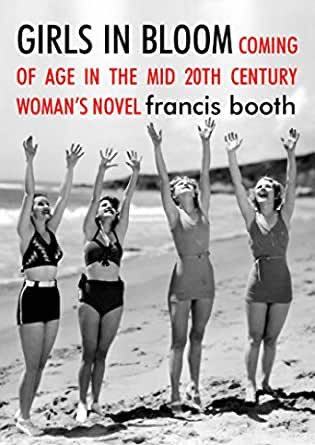
Girls in Bloom by Francis Booth on Amazon*
Girls in Bloom on Amazon UK*
Girls in Bloom in full on Issuu
. . . . . . . . .
For Hutchins’ family, being an artist was just about respectable – though she did cause a stir in Chicago by exhibiting life-size nude male statues – being a writer was something else.
Long before she thought about writing novels Hutchins collaborated on an illustrated 1932 book called Diagrammatics, for which she provided lightly erotic, neoclassical line drawings of young, nude women – they are rather like more minimal versions of Picasso’s Vollard Suite, the first of which appeared in 1930 or his illustrations for Ovid’s Metamorphoses, published in 1931.
They also resemble the erotic, Beardsleyesque illustrations of young girls that Willy Pogány, by then a well-known illustrator and set designer living in New York, provided for a 1926 English-language translation of Pierre Louÿs’ Songs of Bilitis, which Louÿs had originally claimed were his French translations of Greek manuscripts from the same era and sexual orientation as Sappho.
It seems that Hutchins herself initiated this project and, not yet herself a writer, asked Mortimer J. Adler, a professor from Chicago University, of which her husband was then president, to write the words. Adler provided a truly terrible sub-Gertrude Stein text; it is not obvious whether the text is a spoof and the whole thing was a joke. The volume was privately published in a luxurious, limited edition. Although it was not widely distributed, Hutchins’ family was not amused.
“When I was fourteen and visiting a great-aunt, I was late to luncheon,” Mrs. Hutchins relates, “and I said, ‘But I beat Sylvia at tennis.’ My aunt looked at me coldly and said, ‘We have never had an athlete in the family before.’ Three years ago, I sent a copy of Diagrammatics to an elderly cousin. In a letter to me, he said, ‘We have never had an author in the family before.’”
Much worse, from her family’s, and her then ex-husband’s point of view, was to come when she started to write novels; though Hutchins did not publish anything until after her divorce, she wrote under her married name. Hutchins’ first novel was published in 1948, when she was forty-nine, the age Shirley Jackson was when she died.
The respective ages of their daughters when they were writing their novels may partly explain why Shirley Jackson’s teenagers are almost entirely sex-free – except Natalie Waite of Hangsaman (1951), whose one experience of sex is so awful she erases it from her mind and Jackson erases it from the novel – while Hutchins’ teen girls embrace sex and sensuality with great joy and a total lack of inhibition.
. . . . . . . . . .
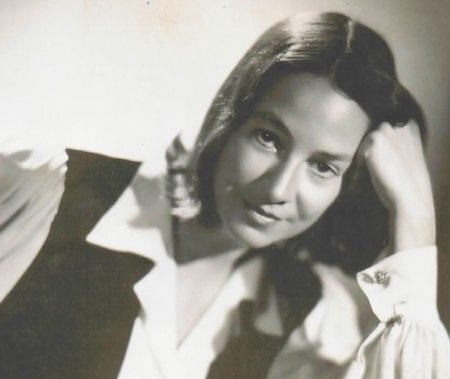 . . . . . . . . . .
. . . . . . . . . .
Despite the aloof toughness her upbringing had given her, Hutchins is an example of a creative woman overshadowed – temporarily at least – by a dominant, alpha male. In 1921 she had married Robert Maynard Hutchins, who was to become the youngest dean of Yale Law School and then the youngest president of the University of Chicago. He was called Golden Boy even at the time.
Maude already had a moderately successful career as an artist and sculptor and was a rather glamorous figure: beautiful and striking, she was almost as tall as him. They were a golden couple and were compared to Scott and Zelda Fitzgerald; later they might have been compared to JFK and Jackie: it was at one time assumed that Robert Hutchins would either end up in the Supreme Court or running for president, though he did neither, partly at least because of the “trouble” he had with his wife.
In a memoir about Robert Hutchins, his former colleague Milton Mayer called Maude the “multifariously talented daughter of the editor of the New York Sun,” and said of her that, “her schooling was fashionable and her artistic talents were encouraged. She meant to have her own career – not her husband’s – and she had it. If he was shy, or stand-offish, she was genuinely aloof. She wasn’t meant to be a schoolteacher’s wife. (Perhaps she wasn’t meant to be anyone’s wife.)”
Scandalous stories
In a story published long after their divorce, “The Man Next Door,” published in her story collection The Elevator (1962), Hutchins writes a description of a man who seems to be a dead ringer for her ex-husband; it is by no means an unkind or unflattering portrait.
I am a country girl born and bred but my husband lives and thinks in a tiny city that he carries around inside his head. His handsome skull encloses very tall buildings and subways and elevators, and the buildings and subways and elevators are full of tiny cell-like people, each with his franchise, his exemption, and his problem. My husband is emperor, prince, chancellor, and his influence is like the handwriting on the wall.
In another story, Innocents,” in Love is a Pie (1952), a collection of stories and playlets (for which Andy Warhol designed multiple covers), Hutchins describes the relationship of a nameless couple that might possibly be a portrait of herself and Bob.
His outbursts of anger against her, which she feared, but which she preserved her strength for and which she made every effort to meet with the community, failing always, with the only “conclusions” he ever made. She was always fresh and he was always fatigued because it was her idea, not his; she was the artist. Unrequited love only comes to those who want it and even then it is not simple.
Artistic, creative, offbeat Maude never fit into her husband’s stuffy social milieu and caused him endless headaches. To “keep Maude quiet” and keep her busy, “poor old Bob” encouraged his wealthy friends to commission sculpted heads and busts from her – for enormous fees which many of his friends seriously resented – but this was never enough.
Maude scandalously paid undergraduates from her husband’s university, male and female, to model nude for her. She also produced family Christmas cards based on her own mildly erotic drawings that were sent to faculty and trustees; as one friend of Bob’s said about them in a memoir:
On at least one occasion with the nude figure of a going-on nubile girl holding a Christmas candle – the model was sensationally reported around town and gown to be the Hutchinses’ fourteen-year-old daughter Franja.
. . . . . . . . . .
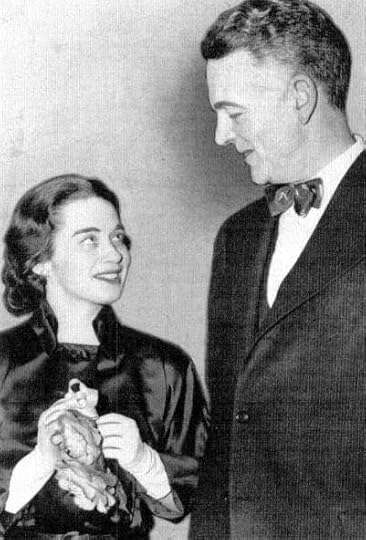
Maude and Robert Hutchins
. . . . . . . . . . .
In the end, Bob got tired of keeping Maude quiet; after twenty-seven years of marriage, he left her in 1948 and she divorced him. He never spoke to her again. Within a year he had married his secretary; worse still, she was called Vesta – for a wife to be left for a secretary twenty years younger and even considerably shorter than herself is one thing, but if the other woman is called Vesta the horror is unimaginable.
Maude moved with her two younger daughters to the backwaters of Southport, Connecticut and stayed there, never remarrying and never – at least publicly – having any other serious relationship with a man; despite their differences, Bob must have been a tough act for any man to follow. And Maude didn’t need to work: Bob, whose salary was $25,000 a year, paid her $18,000.
Still, Maude was something of an alpha female herself, and thrived as an independent woman: she soon got her pilot’s license, as we have seen. Being left without a husband also seems to have encouraged Maude to write novels rather than concentrating on her visual art. She published nine novels between 1948 (the year of her divorce, so she must have been writing while she was still married) and 1967, plus two collections of her short stories, many of which had been published in leading magazines and printed in anthologies, including New Directions.
None of her publications were the kind of thing that the wife – even the ex-wife – of a highly respected member of Chicago society would be expected to produce, and she probably delighted in that fact.
Robert Hutchins published around twenty books of educational and political theory from 1936, when he was thirty-seven, to 1972, but, as mentioned earlier, Maude Hutchins was forty-nine when her first novel was published. She was sixty years old in 1959 when Victorine was released, and sixty-eight when her final novel was published.
The critics are shocked (or at least, uncomfortable)
Older women writing about sex makes middle-aged, male critics squirm; as we shall see, Hutchins suffered at their hands for daring to suggest that the mature woman – indeed any woman – might have lascivious thoughts. The New York Times said of her, “the sensuous is her window on the world; sexuality is the sea for all her voyages.”
Unlike Anaïs Nin’s work, most critics saw the sexual rather than the sensual; there was far too much sex in Hutchins’ novels for many people. At this time censorship was still very much the norm: Hutchins’ second novel, A Diary of Love was nearly prosecuted for obscenity; even the title seems designed to upset the prurient.
Some of Hutchins’ novels were, indeed, republished with sleazy, pulp-fiction covers: A Diary of Love was issued in at least three different pulp covers, all of which had above the title the teaser: “the sexual awakening of a teen-age girl.” At the bottom of the book’s cover, readers were assured that this was “complete and unabridged” — it had been previously issued in a censored version.
. . . . . . . . . . .
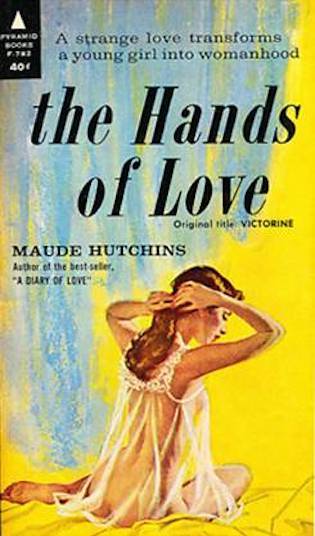
The Hands of Love (formerly titled Victorine)
. . . . . . . . . . .
Victorine was reissued as The Hands of Love, with the blurb, “a strange love transforms a young girl into womanhood,” and Maisie was issued by the Paris-based, erotic-novel specialist Olympia Press with the quote “the shockeroo of the literary season.” The cover featured a woman in bed who looked like she might be a prostitute in the saloon of a Western movie.
“Poor Bob” must have felt each of these as an arrow in the back; her family was likely not amused either. Maude could have used a pseudonym, but where would have been the fun in that? These trashy covers and blurbs are entirely misleading and readers would have been seriously disappointed. It is not obvious whether she approved the lurid covers for these reprints of her books – as we saw with the now-classic lesbian pulp novels, authors at that time had little to no control over titles and covers – though Maxwell Geismar implies that she would not have:
Mrs. Hutchins would resent, I know, any description of her work as “erotic.” The curious thing about her writing, so remarkably open about all forms of personal behavior, was the prevailing tone of candor. If nothing human was foreign to her, everything human was a constant source of delight, of pleasure and gaiety.
When her book was banned by those sagacious guardians of the public morals, the Chicago police, Mrs. Hutchins was quite naturally bewildered. “I can assure you that I have no desire to shock, disrupt the morals or undermine the conventions of the general public,” she wrote at the time. “My defense for A Diary of Love is that having written it, I published it; and that I would not willingly withdraw any of it. My intention was purely artistic, and the subject matter innocence.”
Yet some of Hutchins’ books are still in the list of the prestigious literary house New Directions with far more sober covers, though A Diary of Love has a very slightly naughty line drawing by Hutchins and Love is a Pie still has its original 1952 Andy Warhol line drawing of a woman as a cover. Surely no twentieth-century writer except Nabokov has been represented by such a range of cover art.
. . . . . . . . .
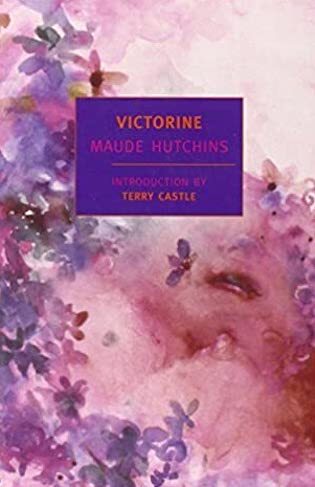
Maude Hutchins’ books on Amazon*
. . . . . . . . . .
Victorine has even been reissued recently as a New York Review of Books Classic, part of an eclectic list that ranges from Balzac to Leonora Carrington, and includes Colette‘s The Pure and the Impure. Hutchins is now becoming part of the American literary canon and moving slowly out of the ghetto of sex-obsessed writers, where she had been closeted, but the critics of the time were generally not kind to her, variously accusing her of being too experimental/literary on the one hand and of being too raunchy on the other.
A review of the short story collection Love is a Pie in the Saturday Review, for January 3, 1953, took the former line.
The stories, written in a prolix and often impenetrable prose, have the self-conscious literary stamp of the little magazines which first published several of them… For a book devoted to the tender human emotion, Love is a Pie seems curiously aloof and unemotional. It consists largely of strained and wearisome cerebral exercises.
Nine years later, a review of Honey on the Moon in the same magazine for February 29, 1964, slung at her the second kind of criticism.
According to all traditional criteria, the book is almost a complete failure. It has no core of moral significance; it takes place in no recognizable social context; most of the characters never come alive, and ninety percent of Mrs. Hutchins’s dialogue could never have been spoken by a human being.
But, although she never distinguishes between love and love-making, Hutchins writes about pure, animal sex with a genuine lyrical passion unmatched by any other contemporary American woman. And the blurry, schizoid interior monologues are almost as good – and hard to read – as those in Tender Is the Night.
If you are willing to endure a banal, pointless novel just for a few first-rate passages of good old you-know-what and a brief close-up of a personality tearing itself apart, you will like Honey on the Moon.
Even as late as 1964, critic Stanley Kaufmann was advising the then-sixty-five-year-old Hutchins to grow up and stop being so obsessed with sex; male critics have always tended to treat female novelists like naughty children – perhaps Hutchins was old enough to be his mother, and perhaps that was his problem with her. Male novelists, of course, never grow up and are allowed, even expected, to hang on to their obsession with sex their whole life.
Many novelists pass through such a period, but there comes a time when ‘then they went to bed’ suffices; or when the bed is to society what war was to von Clausewitz, a continuation of politics by other means. To remain as interested in sex as Colette was all her life long, and as Mrs. Hutchins continues to be, requires an almost monastic single-mindedness.
To be compared with Colette may be considered no insult: Anaïs Nin certainly meant it as a compliment; Colette wrote a series of novels that show the coming of age of her heroine Claudine, begun in 1900 with Claudine at School. Hutchins and Colette are probably the best exemplars of Nin’s ideal of an author who can write erotically without having any – or at least not very much – actual sex in her work.
The Memoirs of Maisie is a good example: despite the lurid picture on the cover of the pulp edition, which misleadingly shows a woman lying seductively on a bed in her underwear and despite the “shockeroo” quote in the blurb, Maisie is a grandmother on the verge of dementia, surrounded by her daughters and granddaughters (men are rarely at the center of Hutchins’ novels and here, they’re pushed way out to the periphery). Maisie does however have reveries of her younger, passionate self, almost like an older Molly Bloom.
The nearest Maisie gets to a sex scene is written erotically, but no actual sex happens – because of the man’s temporary impotence. Colin and Sissy are both married, but not to each other; she agrees to meet him. Colin returns to his wife, knowing that he “had been fooled. He felt as if he had been lifted out of a magician’s hat by the ears and exposed to ridicule, wet and slinky, pink-eyed rabbit.”
Some of the short stories collected in Hutchins’ The Elevator also contain wonderful examples of erotic but sex-free writing. Hutchins can even make a description of a bride’s bouquet at her wedding crackle with an erotic charge. This is from ‘The Wedding,’ also in The Elevator.
The bride looked at the bouquet and saw that it was beginning to droop. One of the topaz roses turned brown, Violette began to shrink and a pink carnation trembled as if in a convulsion. A number of petals detached themselves and floated aimlessly in the still air and a hatch of yellow pollen, riding some tiny updraft, shone like powdered gold. She felt the stems grow feverish and then cold.
A pair of stamens detached themselves and floated downward, a pistil was bathed in perspiration, and the Shasta daisies, as if they were guillotined, lost their heads. She felt what remained of the bouquet struggling to be free of her hands, the flowers were delirious and the pulses in her own wrists began to beat like drums.
In The Future of the Novel, Nin points out perceptively that Hutchins tended to center her works around and see the world through the eyes of young people, especially adolescent girls, who are set against their awful parents while we see them coming of age:
Some of her parents resemble the parents of Cocteau’s Les parents terrible. It is the adolescents in her book who carry the burden of clairvoyance. They see, they know. It is not a battle between innocence and evil but between awareness and hypocrisy. Her adults are hypocritical. The novels are requests for truth, and this truth is usually uttered by those at the beginning of their lives. The work is unique, rich, animated by a sprightly intelligence and verve.
. . . . . . . . . .
Contributed by Francis Booth,* the author of several books on twentieth-century culture:
Amongst Those Left: The British Experimental Novel 1940-1960 (published by Dalkey Archive); Everybody I Can Think of Ever: Meetings That Made the Avant-Garde; Girls in Bloom: Coming of Age in the Mid-Twentieth Century Woman’s Novel; Text Acts: Twentieth Century Literary Eroticism; and Comrades in Art: Revolutionary Art in America 1926-1938
Francis has also published several novels: The Code 17 series, set in the Swinging London of the 1960s and featuring aristocratic spy Lady Laura Summers; Young adult fantasy series The Watchers; and Young adult fantasy novel Mirror Mirror. Francis lives on the South Coast of England. He is currently working on High Collars and Monocles: Interwar Novels by Female Couples.
. . . . . . . . . .
*These are Amazon Affiliate links. If a product is purchased by linking through, Literary Ladies Guide receives a modest commission, which helps maintain our site and helps it to continue growing!
The post The Daring Fiction of Maude Hutchins appeared first on Literary Ladies Guide.
December 28, 2021
Joan Didion: A Tribute to the Writer’s Writer
On December 23, 2021, when I learned that writer extraordinaire Joan Didion had passed away at the age of 87, I did what any friend would do: I canceled the day’s planned activities and concentrated on everything Didion.
For forty-four years, Joan Didion had been my own constant and portable companion: of course I needed to devote time to adjusting to the news of Didion’s passing. Our friendship was, obviously, one way. I can proclaim to know piles of intimate Didion facts and details, but of course Didion never knew me.
But that’s besides the point. Didion will remain one of the most significant influences on my writing life: what one remembers about her is the strength and authority of her writing. No one could imitate her; indeed, whenever anyone tried to channel Didion they were detected immediately.
My longterm Joan Didion love affair began in 1977. One of my very favorite English professors at San Francisco State University held up a copy of Slouching Towards Bethlehem. “We learn best from what is good,” Professor Ritter stated, “and Joan Didion is the best.”
Our class was being introduced to the “New Journalism.” Professor Ritter had no problem in declaring that Joan Didion’s nonfiction easily surpassed the New Journalism of Tom Wolfe and Hunter S. Thompson. Tom Wolfe needed his white suit and Hunter S. Thompson demanded personal physical excess to showcase the New Journalism.
Joan Didion had her sublime sentences filled with a myriad of details to convey her personal and wholly authentic stories. She wrote about nearly every cultural and political upheaval that transformed the U.S. from the 1960s to the present day.
Didion was compelled to find the story behind the story: what was meant by the “disparate images” that was presented to the American public as news.
. . . . . . . . . .
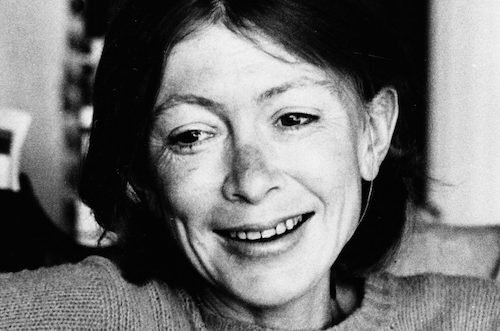
Joan Didion in 1977 (AP photo)
. . . . . . . . . .
“Didion often uses a detail that has stuck with her from a certain moment, which many seem extraneous nut which she uses for a purposes,” fellow writer Sara Davidson explained. “A hallmark of her work is that she repeats those details, almost like a phrase that recurs in a symphony.”
When Davidson asked Didion why the repetition of details, Didion responded with the advice, “I do it to remind the reader to make certain connections. Technically, it’s almost a chant. You could read it as an attempt to cast a spell.”
And cast a spell she did. The writer reads a few paragraphs where Didion does her repetition of fascinating and beguiling — nearly lyrical — phrases as she may describe a wholly depressing scene of heartbreak. Didion is the writer’s writer: her writing may appear deceptively easy, but she’s the prose master other writers return to in hopes that they can do what she does: explain the world with an authentic perception that cannot be imitated.
“Writers are always selling someone out”
Another Didion lesson that I have used for forty-four years came from a phrase — explained by SFSU Professor Ritter for over ninety minutes — of this oft-repeated sentence of Didion’s: “Writers are always selling someone out.”
It’s a line that Didion critics and detractors dislike and disparage for its hint of arrogance. I understood this line as the writer’s only compulsion is the search for truth, the story behind the story, and if the reader is uncomfortable with the outcome, the writer bears no responsibility. The writer need not pay attention to someone’s discomfort: there is too much going on in the world for the writer to stop reporting.
Didion’s husband, John Gregory Dunne, explained that line this way: “No one sees oneself as others do, and if you truly write how you see an individual, that person may be disturbed.”
. . . . . . . . . .
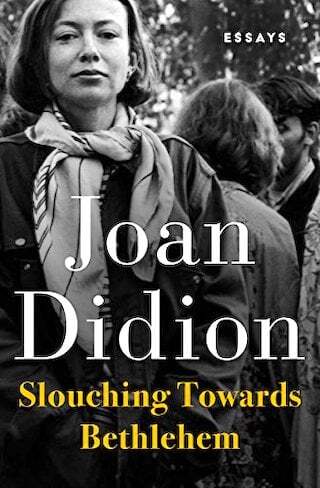
Joan Didion books on Bookshop.org* and Amazon*
. . . . . . . . . .
Thus, it is the writer’s solemn duty to write the story behind the story in search of the truth. And, to write that story well in their own authentic style — or, what was the point in writing at all if one avoids the reality of our times.
Forty-four years ago I first read these lines from Slouching Towards Bethlehem from the essay On Keeping a Notebook:
“It all comes back. Perhaps it is difficult to see the value in having one’s self back in that kind of mood, but I do see it; I think we are well advised to keep on nodding terms with the people we used to be, whether we find them attractive company or not. Otherwise they turn up unannounced and surprise us, come hammering to the mind’s door at 4am and demand to know who deserted them, who betrayed them, who is going to make amends.”
Thinking about Didion and the tremendous legacy that she gave to her readers, I turn to that phrase in gratitude. I like to re-visit my younger writer self who waited for the release of The White Album and was inspired to write the found details in my own 1960s tale. Or, I go forward two more decades and I find myself still searching for some hidden truth, the story behind the story, and I find it.
I credit Joan Didion for that. Often Didion would state that she dreaded going to her writing desk every morning but she knew she must. And that is the another lesson that Didion gave to me: you just keep on writing because you are committed to the stories that need to be told.
“I’m not telling you to make the world better, because I don’t think that progress is necessarily part of the package, I’m just telling you to live in it. Not just to endure it, not just to suffer it, not just to pass through it, but to live in it. To look at it. To try to get the picture. To live recklessly. To take chances. To make your own work and take pride in it. To seize the moment …” (from a 1975 Commencement Speech at University of California Riverside)
Contributed by Nancy Snyder, who writes about women writers and labor women. After working for the City and County of San Francisco for thirty years, she is now learning everything about Henry David Thoreau in Los Angeles.
. . . . . . . . . .
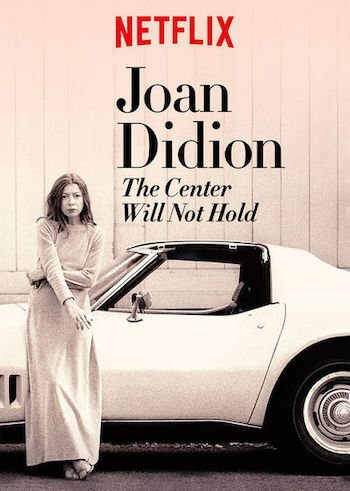
The Center Will Not Hold is the excellent
2017 documentary on Joan Didion
. . . . . . . . . .
*These are Bookshop Affiliate and Amazon Affiliate links. If a product is purchased by linking through, Literary Ladies Guide receives a modest commission, which helps maintain our site and helps it to continue growing!
The post Joan Didion: A Tribute to the Writer’s Writer appeared first on Literary Ladies Guide.
Bread Givers by Anzia Yezierska (1925)
Bread Givers by Anzia Yezierska (1880 – 1970) is the best-known novel by this immigrant writer whose work reflected the Jewish immigrant experience in America of the early 1900s. To set this kind of story down with a female perspective was a rarity in her time, reflecting the author’s chutzpah and determination.
At the age of ten, in 1890, Yezierska arrived with her family to New York City’s Lower East Side. A product of the immigration wave of the late 1800s, she never quite shed the feeling of being an outsider.
Longing to rise above her circumstances, she was somewhat hampered by her brittle personality and a measure of self-loathing. In her final book, the autobiographical Red Ribbon on a White Horse (1950), she wrote: “With a sudden sense of clarity, I realized the battle I thought I was waging against the world had been against myself, against the Jew in me.”
Bread Givers, an autobiographical novel, delves into the well-trodden theme of an immigrant family whose children strain against Old World parents. The father, Reb. Smolinsky might be learned in the holy Torah, but he’s childish, impractical, and inflexible when it comes to his daughters. One 1925 reviewer described his character as “Dickensian.”
The three daughters chafe under their father’s domination. The youngest and feistiest is Sara, oddly nicknamed “Blut und Eisen” (Blood and Iron) from the time she is tiny. She rebels from the start, fighting for her autonomy, seeking self-determination. We can imagine that she is Anzia, through and through. The process of breaking away from her father’s domination is painful. Some of her strivings are awkward and uncomfortable, but she emerges as a person (mostly) in command of her world.
. . . . . . . . .
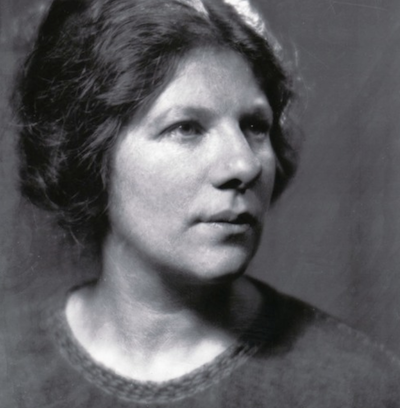
Anzia Yezierska
. . . . . . . . . .
Bread Givers bestowed a greater measure of success to Yezierska, who three years earlier had published the novel Salome of the Tenements. She wrote many fine short stories and even had a stint as a Hollywood writer. Hungry Hearts (1920), her first collection of short stories, was made into a successful 1922 silent film. Yezierska came to be known in Hollywood as “the Sweatshop Cinderella.” though she resented this rags-to-riches stereotype.
Long before her death in 1980, she all but disappeared from the literary world. The mid-1970s brought a wave of reconsiderations of her stories and novels. Bread Givers was reissued in 1975 and 2003, and some of her stories were anthologized, introducing them to new audiences.
In a 1925 essay in the Salt Lake Telegraph, Yezierska mused on what prompted her to write Bread Givers:
“I have always wondered why the people I know and lived with were never found in stories. Whatever I read of the poor were not my poor; not the life I had lived. They were dressed up in romance, in drama, in colorful climaxes that made fine literature …
The living people in their everyday working clothes with all the lines and wrinkles of work and worry were not there. The brutal fight over pennies at the pushcart, the cheap cafeterias where the hungry working girl goes for food only to come out hungrier after her meal than before; the terror of the poor on the first of the month when the rent has to be paid: these realities were too trivial, too sordid for stories.
And yet I knew that in this grinding waste of the dull everyday lay buried rich drama, more colorful than any false heroics of fiction. This conviction that the poorest life is rich enough for the greatest story, that the real struggle of the washerwoman, the shop girl, the fishwife, no matter how sordid, how ugly, throbs with dramatic beauty, is what goaded me to write.”
Despite occasional awkward and overwrought prose, Bread Givers is still eminently readable, and was highly praised upon its publication. In its 1925 review, the New York Times praised the novel for “enabling us to see our life more clearly, to test its values, to reckon up what it is that our aims and achievements may mean. It has a raw, uncontrollable poetry and a powerful, sweeping design.”
. . . . . . . . . .
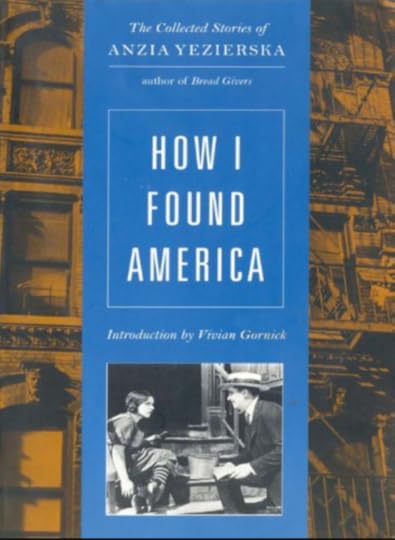
See also:
How I Found America by Anzia Yezierska
. . . . . . . . . .
From the original review in The Brooklyn Daily Eagle, September 5, 1925: When Anzia Yezierska wrote Salome Of the Tenements, all applauded. New York has a ghetto, a legendary yet pitifully and stubbornly real maze of dingy brick walls, where cobblestones make wagons rattle and trucks bounce; where every one of long rows of pushcarts has its screaming peddler and haggling customers; where streets are crowded and each fire escape has its ragged washline and show of bedding airing …
… Where basements are gloomy and attics are fetid and men and women and squalling children cling despairingly to traditions that are worn out even in the Old World. as they reach out eager hands for the milk and honey of the Promised Land. this America of ours.
It has been in this ghetto that the sociologist has written his books and quarreled with his brothers, jealous, as though the place belonged to him, and, because it did not suit his purpose, angry if anyone suggested the same sightless urge people for color and beauty was fermenting along with the disease and living blight, in the melting pot.
Anzia Yezierska, however. dared to find poetry, ideals, and even a measure of grimy contentment on Old Hester Street. The Russian immigrant Jew, to her, is a person and not a specimen for study.
Bread Givers, the latest Yezierska panorama of ghetto lives, published by Doubleday, Page & Co., has its human feeling, the divine comedy of the dreadful commonplace, and the glory of achievement, small to who inherited North America from our ancestors. but great to the family of circumstance reduced in Europe, poverty-stricken here and risen again from the basement by the second generation.
The ghetto has its flavor. Flavors being so much a matter of odor, he rest of New York City avoids its Lower East Side as much as possible. Stomachs that can stand herring and rye bread three times a day make it so. Yet Yezierska does not grow hysterical over these, her people. There is a saving sense of humor in Bread Givers.
The reader is looking at real people, living with them, suffering their little scandals, dreading the arrival of the rent lady, stuffing butter-less bread to ease the gnawing pangs of hunger, Papa shouting Hebraic invocations to Jehovah. while his daughters fight to keep him supplied with soup and the roof over his head.
Papa dabbles in his weak business ventures and his moments of religious elation while the landlady bangs at the door; selling his daughters to fine husbands—or at least. to any husbands—for the sake of his old age and sold out by his own bargaining—it would be sardonic if there were less feeling and filial affection woven into the tale.
. . . . . . . . .
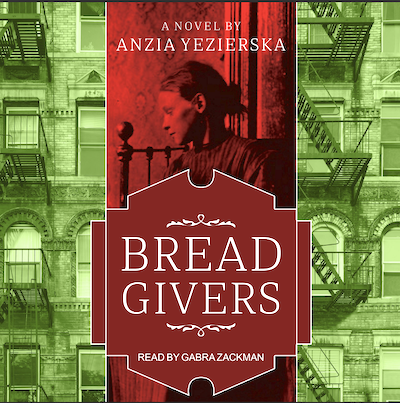
Bread Givers on Bookshop.org* and Amazon*
. . . . . . . . .
Marrying off Bessie to the fish merchant, for instance, the fish merchant who was so carried away by his wrath that he threw dollars’ worth of change into a distracted woman’s face in a mutually greedy argument over the price of flounder. Papa, who chanted from the Torah and who worshiped Jeremiah, drove the bread from his mouth by breaking the hearts of his daughters and wearing out that stolid machine, his wife.
The naked simplicity of the poor which strips them of all inhibitory reserves and leaves them free to climb upward, since they cannot sink lower, comes to life in Bread Givers. Anzia Yezierska does what Fannnie Hurst tries to do. One admired the expert craftsmanship of Lummox, but it was, after all, only a somber piece of storytelling. The rise of little “Blut und Eisen” (Blood and Iron) — what Papa calls Sara, his most stubborn, determined daughter, comes only from a deep suffering and a great experience.
Chanting the Torah did not pay the rent but it did drive Sara from her Papa. As the dean of her college told her, she was a pioneer. And she was an immigrant, escaping from the ghetto to the other side of town. There are many like her, all over. We do not always like their presence, but that is because we fail to understand them.
We have not taken into account the brave adventure they set out upon, uprooting themselves from the tenements and pushing painfully into a new land of sunshine, grass, and sky, a paradise that to us means only a lawn to be cut, storm windows to be put on, and a commutation ticket to be bought the end of every month.
Going so high that she married a school teacher made Sara a success in her world. It is a crude world. too. But the author, wringing the story out of the depths of her heart, somehow transforms herself into a stately Druid priestess, singing sagas.
Bread Givers belongs among those few books that are of contemporary America, a faithful picture without monotony, an exciting account without cheapness. It lacks cant and it lacks prejudice. It is a perfect example of high art in heartthrobs. “It wasn’t my father. but the generations who made my father whose weight was still upon me,” concludes the story.
. . . . . . . . .
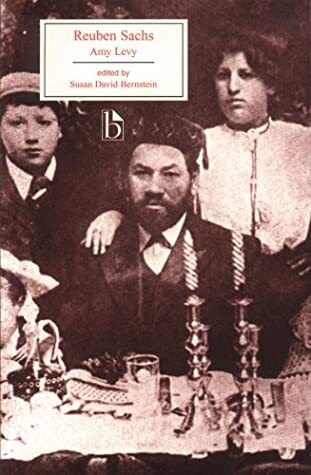
You may also enjoy:
Jewish Women in Novels by Early Jewish Female Writers
. . . . . . . . . .
*These are Bookshop Affiliate and Amazon Affiliate links. If a product is purchased by linking through, Literary Ladies Guide receives a modest commission, which helps maintain our site and helps it to continue growing!
The post Bread Givers by Anzia Yezierska (1925) appeared first on Literary Ladies Guide.
December 24, 2021
Jewish Women in Novels by Early Jewish Female Writers
Depictions of Jewish women in fiction or memoir by Jewish female writers prior in the 19th century and the first decades of the 20th were exceedingly rare, whether in English or translation. That makes the works discussed ahead rare gems, even if they weren’t brilliant by the highest of literary standards. All are eminently readable, however, and completely fascinating.
Working back from Vera Caspary’s Thicker Than Water (1932) to Amy Levy’s controversial Reuben Sachs (1888), these novels, often autobiographical (as well as one memoir) offer gritty, realistic glimpses into Jewish family and romantic life of their times.
Excerpted from the forthcoming book A Girl Named Vera Can Never Tell a Lie: The Novels of Vera Caspary by Francis Booth, reprinted with permission.
. . . . . . . . . .
Thicker Than Water by Vera Caspary (1932)
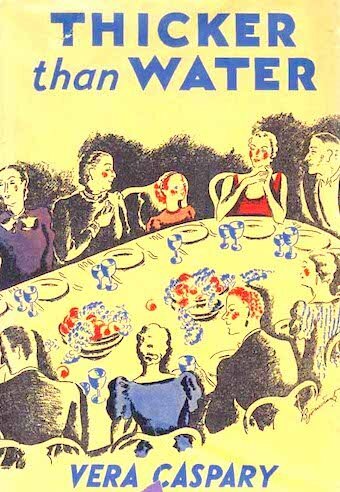
Vera Caspary’s Thicker Than Water (1932) is unlike any other of her novels: it is a family saga spanning forty-six years, starting in the 19th century and bringing us right up to date at the end of the 1920s twenties flapper era with no concern for tradition or history, only for the present. Caspary made it clear that the family in this story is her own family.
Out of memories awakened in Mama by my descriptions of the sister she had not seen for so many years came the notion of a novel. This was another novel I had to write. Nothing could keep me from it, neither fear nor practical considerations nor intimations of future gutters. I wrote as I had always wanted, completely absorbed in a tale of my mother’s generation, my sister’s girlhood and my own time, a novel that recorded the passing of forty-six years in a family; my family disguised, dramatized, but essentially the Casparys.
Caspary herself was a thoroughly modern working woman, earning unheard of sums of money for a woman her age. Unencumbered by family, religion, or husband, she traveled the world writing. As the review of Thicker Than Water in the New York Times said:
Writing is not necessarily a sedentary occupation – not when Vera Caspary is the writer. A new book, Thicker Than Water, announced for immediate publication by Liveright Inc., was started in Great Neck and continued on the boat en route to England. The first few chapters were thrown away in London, and the author started all over again in Paris. She continued writing on the boat coming back to the United States, finished the book in New York, corrected it in Chicago and proofread it in Brookfield, Conn.
The central character at the start of Thicker Than Water is Rosalia, the name of Caspary’s grandmother’s sister and an anagram of Solaria, the central character of Caspary’s first novel The White Girl. She herself is a modern woman by the standards of the end of the 19th century and has no wish to find a husband.
However, her younger brother wants to marry, and by family and social tradition, he cannot do so until his elder sister is married. Rosalia isn’t considered attractive, is rather old for the marriage market, and has very little money – she was adopted by her uncle when her father lost his fortune. She settles for a Jewish man of German extraction, despite her family – like Caspary’s family – looking down on any Jewish families not of Spanish or Portuguese descent. As Caspary wrote in her autobiography,
Indifferent though we were to religion, we were contemptuous of Jews who denied being Jewish or changed their names and contradicted ourselves with scorn for those whose names ended in -witz or -ski. Papa’s sister, my beloved Aunt Olga, the most merciful of women, would often tell me in a hushed voice, “They’re not the finest kind of Jewish people, dear.”
Rosalia’s husband takes a mistress. And then another. He buys Rosalia a house, where she feels stuck with her daughter, unable to fulfill all the dreams she had, most of which came from books. As the years go on, her daughter Beatrice leaves home and then leaves her husband; she goes off on her own to make a fortune in business which she then loses in the 1929 Wall Street crash.
And then there is a granddaughter called Rosalie, or Little Rosie, who marries an impecunious artist. In a gesture of reconciliation with both her granddaughter and the modern world, Rosalia gives Rosie a family heirloom which she has guarded zealously a whole life.
. . . . . . . . . .
Salome of the Tenements (1922) and Bread Givers (1925)by Anzia Yezierska

Anzia Yezierska was one of the precursors to Caspary’s saga of Jewish family life, Thicker Than Water. Like Caspary, but unlike most traditional Jewish writers, Yezierska put women at the center of her writing— those born into poverty-stricken Jewish families in New York’s Lower East side. Her stories were first collected in Hungry Hearts, 1920, and made into a silent movie in 1922.
Bread Givers (1925) remains Yezierska’s best-known works. The novel depicts the struggle of Sara Smolinsky and her three sisters with their orthodox father, a Torah scholar who refuses to work. He therefore earns no money and tries to force his daughters to marry against their will so they can support him.
Fortuitously, Sara wins a thousand dollars in an essay competition at her college and becomes a teacher, escaping from her slum background and the tyranny of her father, “the tyranny with which he tried to crush me as a child,” and comes of age as an independent single woman in America.
A triumphant sense of power filled me. Life was all before me because my work was before me. I, Sara Smolinsky, had done what I had set out to do. I was now a teacher in the public schools. And this was but the first step in the ladder of my new life. I was only at the beginning of things. The world outside was so big and vast. Now I’ll have the leisure and the quiet to go on and on, higher and higher.
Once I had been elated at the thought that a man had wanted me. How much more thrilling to feel that I had made my work wanted! This was the honeymoon of my career!
In Yezierska’s Salome of the Tenements (1922) Sonya Vrunsky is another poor but strong-minded, independent Jewish woman, another creation worthy of Caspary herself.
The title of the novel is a reference to the biblical Salome, who made her stepfather cut off the head of John the Baptist for her. In the New Testament gospels of Mark and Matthew however, it is her mother who makes Salome ask for the severed head.
A woman should be youth and fire and madness — the desire that reaches for the stars. A man should be wisdom, maturity, poise. (Anzia Yezierska, Salome of the Tenements)
Sonya Vrunsky decides she is going to escape poverty by marrying an “Anglo-Saxon” millionaire. She does, though in the end she decides he is not for her, goes off with someone else and carves out a career for herself as a fashion designer.
Manning, the millionaire husband, having previously always been “fastidiously aloof,” unravels when he realizes that Sonya has been deceiving him; this is her coming-of-age moment both as a woman and as a Jewish woman.
Dazed, struck into sudden awakening by her repulse, his burning gaze covered her from head to foot. Hair disheveled, waist torn away, revealing the heaving bosom, the white throbbing neck, she stood there, superb, ravishing in her fury … Her scorn stripped him naked, exposed him to himself.
“So this is Manning, the Anglo-Saxon gentleman, the saint, the philanthropist – the savior of humanity.”
Wonder was in her eyes and cold anger in her voice.
“You didn’t want me when I was burning for you,” she laughed harshly, remembering how she had lain beside him night after night, sleepless, nerves unstrung, hungering in vain for a kiss, for a breath of response, for a sign of his need of her. “Now I don’t want you.”
In the triumph of her sex which he had once so cruelly mortified she looked fully at him. This was her moment. She had it in her to bring this wreck back to life – to give him the warmth, the passion, the ardor that none of the women of his kind could give. There he stood perishing for her. . . Here was a child that needed comforting. And she was a woman. For the first time in all her life she was a woman.
. . . . . . . . . .
I Am a Woman — and a Jew by Leah Morton (1926)
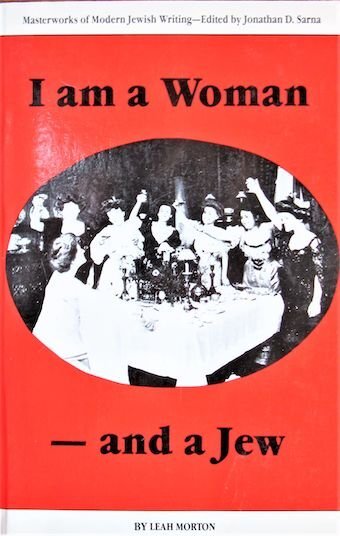
I Am a Woman – and a Jew (1926) is an autobiographical novel by Leah Morton (1889 – 1954; born Elizabeth Gertrude Levin) repeats this idea of the superiority of Spanish and Portuguese descent and promotes the idea that there is an ancient Jewish race memory:
… we Jews are alike. We have the same … sensitiveness, poetry, bitterness, sorrow, the same humor, the same memories. The memories are not those we can bring forth from our minds: they are centuries old and are written in our features, in the cells of our brains.
Morton combines this idea with the anti-Polish racism of her family, identical to the racism of the Piera family in Thicker Than Water, although Morton herself was born in Poland.
I, very tall for my age, very thin, with enormous brown eyes, and excessively high forehead that we all thought the acme of homeliness, and a funny nose that had neither the exquisite delicate curve of Hannah’s, nor the round impudence of Simeon’s, but was only a sort of parody of the Polish noses servants had.
They called me the “Polak,” because I was quick and vivid, dreamy and intense, and sometimes obstinate as a stupid Polish servant who will not see what her bettors tell her. When my father said quietly, “Do thus,” and I asked, “Why?” he would look at me with his deep glance and reply, conclusively, “Do not be a little Polak.”
. . . . . . . . . .
The Promised Land by Mary Antin (1912)
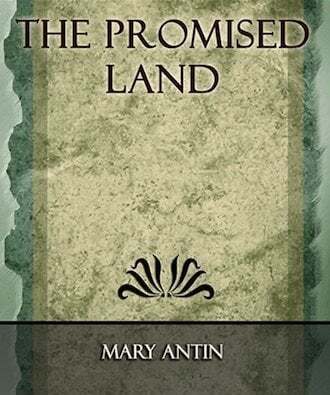
Another female Jewish author to write of the experience of immigration was Mary Antin (1881–1949) born, like Yezierska in Polotsk (or Polotzk), then part of Russia and now in Belarus. Antin’s parents were trying to escape the rampant anti-Semitism in Russia:
… they considered it pious to hate and abuse us, insisting that we had killed their God. To worship the cross and to torment a Jew was the same thing to them. That is why we feared the cross. Another thing the Gentiles said about us was that we used the blood of murdered Christian children at the Passover festival.
The title of Antin’s memoir, The Promised Land (1912) is not ironic: unlike the fictional Sonya in Salome of the Tenements, the autobiographical Mary transcends the poverty into which her new life in Boston plunges her family, at first in her own head and later in the achievements of her life. For her, America really is the promised land, where everything is possible.
Antin describes herself in the book as “striving against the odds of foreign birth and poverty, and winning, through the use of abundant opportunity, a place as enviable as that of any native child.” Mary’s family live among the slums of Dover Street in Boston’s ethnic South End but, in her head, Mary is in a different place altogether.
Dover Street was my fairest garden of girlhood, a gate of paradise, a window facing on a broad avenue of life. Dover Street was a prison, a school of discipline, a battlefield of sordid strife. The air in Dover Street was heavy with evil odors of degradation, but a breath from the uppermost heavens rippled through, whispering of infinite things.
In Dover Street the dragon poverty gripped me for a last fight, but I overthrew the hideous creature, and sat on his neck as on a throne. In Dover Street I was shackled with a hundred chains of disadvantage, but with one free hand I planted little seeds, right there in the mud of shame, that blossomed into the honeyed rose of widest freedom.
In Dover Street there was often no loaf on the table, but the hand of some noble friend was ever in mine. The night in Dover Street was rent with the cries of wrong, but the thunders of truth crashed through the pitiful clamor and died out in prophetic silences.
Antin did break free of poverty and of the prejudice against her creed, by her own efforts. She attended the Girls’ Latin School in Boston, married a scientist and went to the women-only Barnard College in New York.
There I took all the honors that I deserved; and if I did not learn to write poetry, as I once supposed I should, I learned at least to think in English without an accent. Did I get rich? you may want to know, remembering my ambition to provide for the family.
I can reply that I have earned enough to pay Mrs. Hutch the arrears and satisfy all my wants. And where have I lived since I left the slums? My favorite abode is a tent in the wilderness, where I shall be happy to serve you a cup of tea out of a tin kettle and answer further questions.
Yezierska’s stories and Antin’s memoir are set among deep poverty in New York and Boston, from which the heroines attempt to escape in their various ways, whereas Caspary’s Jewish family, both the real-life version recounted in The Secrets of Grown-Ups and the fictional Thicker Than Water are bourgeois and living in Chicago.
. . . . . . . . . .
Reuben Sachs by Amy Levy (1888)

Closer to Caspary’s fictional family in social standing if not in geography are the wealthy Sachs family in Reuben Sachs (1888) by Amy Levy (1861 – 1889). Sachs, a British novelist and feminist essayist, was the first Jewish woman at Cambridge University, Levy lived the life of the “New Woman” with a circle of literary and sometimes lesbian friends, especially her probable lover Vernon Lee.
Levy’s novel The Romance of a Shop (also published in 1888), is a “New Woman” novel about four sisters trying to make it in business. In 1886, Levy had published “The Jew in Fiction,” in the British Jewish Chronicle. She said that no novelist so far had succeeded in “grappling in its entirety with the complex problems of Jewish life and Jewish character. The Jew, as we know him today … has been found worthy of none but the most superficial observation.”
Levy took her own life at the age of twenty-seven and became the first Jewish woman to be cremated in England; Oscar Wilde, who had published her stories in his Woman’s World, wrote an obituary for her.
The Sachs family lives in the most prestigious parts of London, England (Levy’s own parents lived in Bloomsbury). The Sachses are “a family of Portuguese merchants, the vieille noblesse of the Jewish community.” Both Caspary’s real family and her fictional family in Thicker Than Water share this pride in their ancient Portuguese heritage, especially compared to more recent German and Polish Jewish immigrants, on whom they look down.
In the Sachses’ London Jewish community, “with its innumerable trivial class differences, its sets within sets, its fine-drawn distinctions of caste, utterly incomprehensible to an outsider, they held a good, though not the best position.”
Levy’s short novel, subtitled An Essay, was written in response to what she considered the over-sentimental treatment of the Jewish characters and what she considered the naïve, romantic view of Zionism in George Eliot’s Daniel Deronda (1876) with its “little group of enthusiasts, with their yearnings after the Holy Land.” When Daniel finds out that his mother has hidden his Jewish heritage from him, Daniel is ashamed of her rather than of being Jewish:
It would always have been better that I should have known the truth. I have always been rebelling against the secrecy that looked like shame. It is no shame to have Jewish parents—the shame is to disown it.
But his mother is unrepentant.
I rid myself of the Jewish tatters and gibberish that make people nudge each other at the sight of us, as if we were tattooed under our clothes, though our faces are as whole as theirs. I delivered you from the pelting contempt that pursues Jewish separateness.
Despite the man’s name in the title of Levy’s Reuben Sachs, the novel is at least as much about Reuben’s cousin Judith Quixano, a Caspary woman in the making, similar in some ways to Rosalia, her counterpart in Thicker Than Water and to Solaria in The White Girl. Judith’s patrician Portuguese ancestry comes out in her looks.
She was twenty-two years of age, in the very prime of her youth and beauty; a tall, regal-looking creature, with an exquisite dark head, features like those of a face cut on gem or cameo, and wonderful, lustrous, mournful eyes, entirely out of keeping with the accepted characteristics of their owner.
Judith (whose name references the Biblical story of Judith and Holofernes), who has been adopted by her aunt and uncle after her family lose their money, doesn’t have a financial inheritance of her own and, despite her good looks, she knows her adoptive parents will find it difficult to marry her off into another good Jewish family.
Judith is in love with Rueben and vice versa, although they are first cousins. It looks for a while as if they will marry, but Judith receives a marriage proposal from the non-Jewish, wealthy Bertie. She reluctantly accepts.
Material advantage; things that you could touch and see and talk about; that these were the only things which really mattered, had been the unspoken gospel of her life.
Now and then you allowed yourself the luxury of a fine sentiment in speech, but when it came to the point, to take the best that you could get for yourself was the only course open to a person of sense.
The push, the struggle, the hunger and greed of her world rose vividly before her. Wealth, power, success—a flaunting success for all men to see; had she not believed in these things as the most desirable on earth? Had she not always wished them to fall to the lot of the person dearest to her? Did she not believe in them still? Was she not doing her best to secure them for herself?
Judith regrets her decision almost immediately and wishes she had held out for Reuben. Then she hears that Rueben has died. The novel ends on a low note, with Judith’s dark thoughts.
It seemed to her, as she sat there in the fading light, that this is the bitter lesson of existence: that the sacred serves only to teach the full meaning of sacrilege; the beautiful of the hideous; modesty of outrage; joy of sorrow; life of death.
Although it was a commercial success on both sides of the Atlantic, the British Jewish press hated Reuben Sachs, with its merciless portrayal of such shallow, unsympathetic characters. Jewish World said of Levy: “She apparently delights in the task of persuading the general public that her own kith and kin are the most hideous types of vulgarity.”
The Jewish Chronicle didn’t even review it, despite having published Levy’s earlier essay, but referred to it as being “intentionally offensive.”
In an interesting coda, Reuben Sachs was responsible for another novel about a young Jewish woman coming of age, though the novel itself was fictional, a novel within a novel. The year after Reuben Sachs appeared, and soon after Levy’s death, the future Zionist campaigner Israel Zangwill, who coined the phrase “melting pot” in the title of a play, was commissioned by the Jewish Publication Society of America to write Children of the Ghetto, concerning a group of characters in the Jewish East End of London.
In the novel, Esther Ansell, many of whose views seem to echo Zangwill’s own, writes a novel, Mordecai Josephs, under a male pseudonym; no one knows she is the author; her novel seems to be based on Reuben Sachs. Everyone in Esther’s set hates the book and the way it betrays the mercenary and unspiritual bourgeois Jewish inhabitants of London, exactly the criticism the Jewish press had of Reuben Sachs.
. . . . . . . . .
Contributed by Francis Booth,* the author of several books on twentieth-century culture: Amongst Those Left: The British Experimental Novel 1940-1960 (published by Dalkey Archive); Everybody I Can Think of Ever: Meetings That Made the Avant-Garde; Girls in Bloom: Coming of Age in the Mid-Twentieth Century Woman’s Novel; Text Acts: Twentieth-Century Literary Eroticism; and Comrades in Art: Revolutionary Art in America 1926-1938.
Francis has also published several novels: The Code 17 series, set in the Swinging London of the 1960s and featuring aristocratic spy Lady Laura Summers; Young adult fantasy series The Watchers; and Young adult fantasy novel Mirror Mirror. Francis lives on the South Coast of England. He is currently working on High Collars and Monocles: Interwar Novels by Female Couples.
. . . . . . . . .
*This is an Amazon Affiliate link. If a product is purchased by linking through, Literary Ladies Guide receives a modest commission, which helps maintain our site and helps it to continue growing!
The post Jewish Women in Novels by Early Jewish Female Writers appeared first on Literary Ladies Guide.
December 15, 2021
Recalling the Bobbsey Twins and Their Fictional Author, “Laura Lee Hope”
There are certain authors from one’s schoolgirl years who acquire an aura with their ability to hook the reader, leave her asking for more, and linger in the memory. One such author was Laura Lee Hope, with her many adventure tales featuring the Bobbsey Twins — two sets of fraternal twins, Nan and Bert, and the younger Flossie and Freddie.
Whilst the older twins are dark-haired and of serious disposition, the younger two are impish and blond. My favorite, as I recall, was Flossie. Her father often referred fondly to her as “my fat fairy.” In today’s children’s literature, it might not go down well for a child to be referred to as fat, even affectionately.
In the early stories, the twins begin to grow older. Perhaps the idea of them overtaking the age of their readers was too risky. And so, the older twins were given the permanent age of twelve, while the younger twins remained forever six years old.
As fictional characters, it was easy for them to be the same age chronologically and it never struck their young readers that they would one day go beyond those idyllic childhood years to face the realities of adulthood.
. . . . . . . . . .
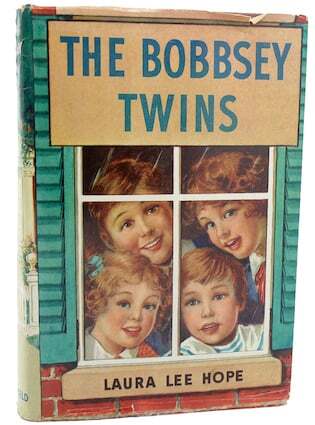
. . . . . . . . . .
No real “Laura Lee Hope”Imagine the surprise when a faithful Bobbsey Twins reader discovers that there isn’t, and never was, a real Laura Lee Hope. This name was a part of the Stratemeyer Syndicate, which successfully published these stories for the long-running spell of seventy-five years! The first of the seventy-two volume series was said to have been written by Edward Stratemeyer (The Bobbsey Twins; or, Merry Days Indoors and Out, 1904). The series in its original form concluded in 1979.
Two subsequent efforts at restarting the series didn’t meet with the same level of publishing success, possibly because times had changed, along with reader expectations.
Stratemeyer set the ball rolling and was joined by other authors credited with writing the books, including Lilian Garis, Elizabeth Ward, Harriet Stratemeyer Adams, Andrew Svenson, June Dunn, Grace Grote and Nancy Axelrad, to name a few. Other writers also collaborated in the writing and editing.
In today’s terminology, they would likely be called ghost-writers and relegated to oblivion. Yet it’s a blessing to be able to credit the many authors of the Bobbsey Twin series, which were so much a part of young readers’ lives, including my own. In those innocent years, I had no way to tell writing styles apart, or perhaps all the authors followed the template of “Laura Lee Hope” quite precisely.
Interestingly, the same syndicate published the Nancy Drew books under the name “Carolyn Keene” and the Hardy Boys series under the name of “Franklin W. Dixon” —these names also represented a number of contributing authors. (There was a first “Carolyn Keene” who helped establish the Nancy Drew series, though, and that was Mildred Wirt Benson.)
Trying to stay relevant
The twins’ father, Mr. Bobbsey, is a lumberyard owner in Lakeport; their mother, Mary, is a stay-at-home mom, as was common in those times. Other characters included their black cook Dinah Johnson and her husband, Sam Johnson, the Bobbsey family’s Man Friday.
The characters also included various friends and foes, like the school bully. There were also a whole host of pets — a couple of dogs, a duck, and Snoop the cat. The latter is worthy of mention because “he” starts off male until being lost at a circus and then returns as a “she,” likely as a result of the next tale being written by another author in the syndicate.
In the 1960s, the Stratameyer Syndicate attempted to rewrite and update the series to keep up with the changing times. Automobiles replaced buggies, and the lovable Mrs. Bobbsey was now holding a part-time job. The most significant of all the changes is in the portrayal of Dinah and Sam, the two Black characters, who had to be dealt with differently, to factor in changing social mores.
. . . . . . . . . .
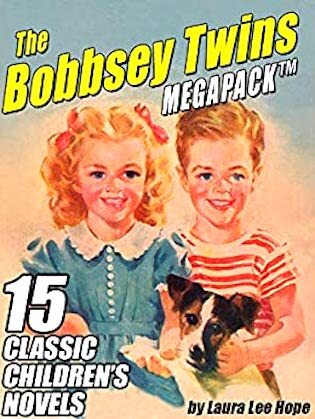
Bobbsey Twins books on Amazon*
. . . . . . . . . .
It was interesting for me to discover that the term “Bobbsey Twins” came to be used as a synonym for sincere do-gooder duos, or two people who are inseparable. The books showcased a world of perfect parents, ample creature comforts, and enough adventure and excitement to balance the realization of a secure home environment.
The books are said to have sold millions of copies and still adorn bookshelves in America, yet there could be a message in its appeal to children from other parts of the world, like faraway India.
Today, the world is a global village with technology connecting citizens through social media platforms. You can be friends with people from all over the world, even before you wind up meeting them in person (if you ever do).
But perhaps stories like the Bobbsey Twins were precursors in this regard, as they tapped into what was of universal appeal to children across the world —a sense of well-being that comes from being part of the life of a wholesome family, joined by their adventures. In a country of disparities like India, that can only belong to those children who are privileged enough to have an education and are blessed with parents who encourage their imagination to soar, providing them access to books in an acquired language about people who live in other lands.
Contributed by Melanie P. Kumar: Melanie is a Bangalore, India-based independent writer who has always been fascinated with the magic of words. Links to some of her pieces can be found at gonewiththewindwithmelanie.wordpress.com.
. . . . . . . . . .
More about The Bobbsey Twins series All of the Bobbsey Twins books in order Public domain works by “Laura Lee Hope” Further info on Encyclopedia.com Audio versions of the Bobbsey Twins books on Librivox. . . . . . . . . .
*This is an Amazon Affiliate link. If a product is purchased by linking through, Literary Ladies Guide receives a modest commission, which helps maintain our site and helps it to continue growing!
The post Recalling the Bobbsey Twins and Their Fictional Author, “Laura Lee Hope” appeared first on Literary Ladies Guide.
Beverly Cleary, prolific author of children’s novels
Beverly Cleary (April 12, 1916–March 25, 2021) was an American author of children’s and middle-grade fiction. Extraordinarily prolific and beloved by young readers worldwide, sales of her books have exceeded 91 million copies, and many are still in print.
Starting with the series featuring Henry Huggins and his dog Ribsy in 1950, she went on to create many unforgettable characters, including Ramona Quimby and Ralph S. Mouse.
So, how does a person go from living on a humble little farm in an obscure town in the Pacific Northwest to someone who had an undeniable flair for creating books that generations of children have loved to read? Let’s start finding out.
Childhood and early education
Born Beverly Atlee Bunn in McMinnville, Oregon, until the age of six she lived on the family’s farm in Yamhill just a few miles from her birthplace. An only child, Beverly loved roaming freely about on the farm, eating apples in the shade of the apple tree, watching her father milk the cow and the farmhands thresh the wheat, helping her mother bring in the cow, and gathering wildflowers.
Yamhill lacked a library. Mrs. Bunn took it upon herself to acquire some borrowed space in a building downtown, organize fundraisers, and procured children’s books from the state library in Salem in order to build Yamhill’s first, much-needed library.
Beverly loved listening to the books being read to her and the pictures in the stories. There were so many children’s books available at the Yamhill library now, Mrs. Bunn begged Beverly to let her teach her to read, but Beverly wanted to wait and learn to read in school with the other children, rather than in her mother’s kitchen.
By the time Beverly was six years old, the family farm fell deeply into debt. The Bunns moved to Portland, where Beverly’s father got a job at a federal reserve bank as a night guard. First grade was going along well for Beverly until she contracted chickenpox and missed more than a week of school.
Upon her return, not only did she fail to receive any more of the gold stars she was used to getting for her schoolwork, she began to fail miserably at reading. Her teacher was becoming mean enough to make her fear going to school. Beverly caught smallpox from a neighbor, missed even more school, and grew hopeless at reading. Her mother continued to read aloud to her and encouraged Beverly to choose the stories she wanted to hear.
Beverly disliked reading and it wasn’t until the third grade when, according to her biography, A Girl from Yamhill, she:
“… picked up The Dutch Twins by Lucy Fitch Perkins planning to look at the pictures and I discovered that I was reading and enjoying what I read! It was a miracle. I was happy in a way I had not been happy since starting school. I read all afternoon until I had finished the book. Then I read The Swiss Twins. For once mother postponed bedtime, until I finished the book.”
From then on, Beverly Bunn read countless books for pleasure, to combat boredom, for escape, to kill time while waiting for the rain to cease, and to learn about all matter of things from animals to people and everything in between. Over the next decade or so, some of her favorite stories would include Les Miserables as it was told to her seventh-grade healthy living class by a teacher apparently bored with the standard curriculum, along with Peter Pan, Tom Sawyer, and Jane Eyre.
In the seventh grade, Beverly had a reading teacher who would inspire her to become a librarian and a writer. Miss Smith was the first teacher to allow the students to read for enjoyment (without answering questions about the books, etc.) and a kind librarian who let Beverly into the library first on the days St. Nicholas Magazine³ was delivered.
A popular publication for children that launched in 1873 (Mary Mapes Dodge was its first editor), it was filled with stories, illustrations, and information of interest to children of all ages. To get an idea of what inspired Beverly Bunn, open the link below, click on the thumbnail, select “images” above Material Information.
The effects of the Great Depression were felt by the Bunn family in Portland, much like millions of other families at home and abroad. Adjustments and sacrifices were made by all. Beverly’s father lost his job and her mother picked up work by cold calling from their living room. They had to sell their car, the tension was thick, and laughter was a memory, as she recalled in My Own Two Feet: A Memoir. Somehow, the family muddled through.
. . . . . . . . .
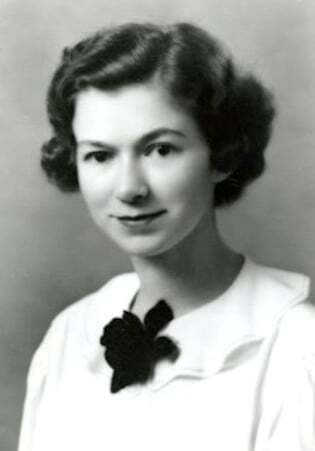
Beverly in 1938, as a senior in college
. . . . . . . . .
Beverly turned eighteen in 1934 and moved to California to attend Chaffey Junior College. Eventually, she would go on to complete her master’s degree at the University of California at Berkeley. She had worked her way through college and began to date the man who would become her husband, Clarence Cleary.
Although it was a tradition, in that era, for women to attend college to catch a man, that wasn’t Beverly’s motivation for getting an education. She wanted to be able to stand on her own two feet. She wanted to accomplish her dual goals; earning a librarianship degree and writing books. Catching a man was left to chance, as it were. She planned to work for a year after college before getting married.
Beverly attended the school of librarianship at the University of Washington in Seattle and upon graduation took a job as a children’s librarian in Yakima. She soon discovered the local boys weren’t interested in reading the books available to them, as they often asked her where to find the books about “kids like us.”
Beverly turned this into something of a personal quest. She spent hours memorizing stories from books for a lively retelling during story hour in the library and, during the summer, in the park. All told, Beverly memorized a total of sixty-two stories during her time in Yakima, The Five Chinese Brothers by Claire Huchet Bishop being the most popular among them.
Marriage to Clarence Cleary, and starting to write
On October 6, 1940, almost a year to the day after beginning her job in Yakima, Beverly Bunn headed to California to marry Clarence Cleary. When she left Yakima, the head librarian commented that she didn’t understand why the children liked her so much. But the secret was that she treated them with respect, just as she treated adults.
Beverly embraced her role as a housewife and spent the first holiday season working at a bookstore. With the murmur of war on everyone’s lips, the Cleary’s decided against starting a family, as Clarence could be drafted despite his high draft notice number. Beverly began working at a library position for the Army, a job she held until the end of the war.
Post-war, the Clearys moved to Berkeley and Beverly found herself staring at her typewriter with nothing to say. She’d always known she wanted to be a writer and, hoping that someday she’d have life’s necessities taken care of, the opportunity to write would finally present itself. The problem was she didn’t know what to write.
Thank goodness Beverly had a great imagination! After waiting and planning for the time to write for nearly twenty years, without ever having written a word of fiction, she recalled the children in the Yakima library who wanted to read stories about “kids like us.” Now age thirty-three, she thought of the kids on her street in Portland riding skates and playing along Klickitat Street.
Though she was unsure of how to begin writing, once she did, she had a knack for telling an interesting story — and so, the world of Henry Huggins was born. Thanks to her imagination, dreams, and goals, when she finally did start to write, the stories poured from her with such ease that was able to skip the typical long rejection process.
. . . . . . . . .
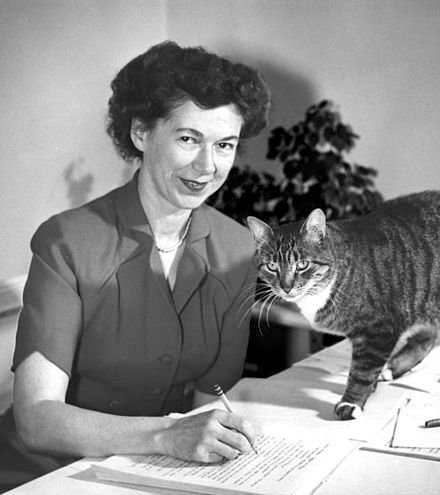
Beverly and friend, around 1955
. . . . . . . . .
Beverly’s years as a children’s librarian proved useful in stepping into her writing career. She had a firm handle on what children enjoyed reading. Her first book, Henry Huggins, was published in 1950 and became the first in a long-running series about the boy and his dog, Ribsy.
Henry’s neighbor girls, Beezus and her younger sister Ramona, soon became stars in a series of their own. Beezus and Ramona was the title of the first of the books about the Quimby sisters, published in 1955. The last of her novels for children, Ramona’s World, was published in 1999.
In between, dozens of books were published, both as part of these series and outside of them. Some of the best known include several books about Ralph S. Mouse, starting with The Mouse and the Motorcycle, and the critically acclaimed Dear Mr. Henshaw, a stand-alone chapter book for middle grade.
Beverly Cleary also produced two memoirs. A Girl from Yamhill (1888) covered her childhood, and My Own Two Feet (1995) detailed her college years and young adulthood. She was an author who very much enjoyed her career. In a 2011 interview with the Los Angeles Times, Beverly, then 95 years old said, “I’ve had an exceptionally happy career.” Beverly Cleary was just three weeks shy of her 105th birthday when she passed away in March 2021.
. . . . . . . . .
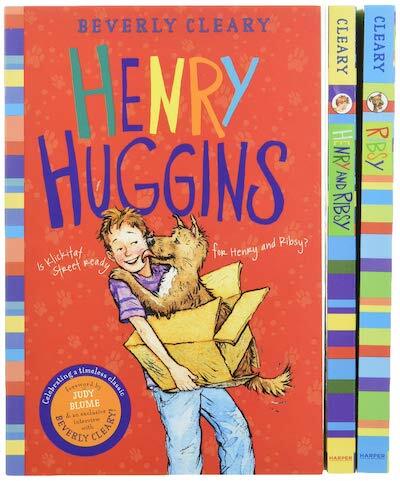
Beverly Cleary page on Amazon*
. . . . . . . . .
Beverly Cleary’s books have been enjoyed by generations of children, with her gift for writing books that children wanted to read. Her books have been translated into twenty-nine languages, have sold, as mentioned, more than 91 million copies, and received numerous awards, including the prestigious John Newbery Award in 1984 for Dear Mr. Henshaw.
Her books are considered culturally significant for depicting everyday details of middle-class American childhood in a humorous yet respectful way. Here are some comments from literary critics:
“Cleary’s books have lasted because she understands her audience. She knows they’re sometimes confused or frightened by the world around them, and that they feel deeply about things that adults can dismiss.” (Pat Pfliger, professor of children’s literature)
“Cleary is funny in a very sophisticated way. She gets very close to satire, which I think is why adults like her, but she’s still deeply respectful of her characters—nobody gets a laugh at the expense of another. I think kids appreciate that they’re on a level playing field with adults.” (Roger Sutton, Horn Book magazine)
“Cleary’s books are addictive for young readers. Learn to read just well enough, and off you go, like Ralph S. Mouse going pb-pb-b-b-b and zooming down the hallway of the Mountain View Inn.” (Sarah Larson, The New Yorker)
“When you’re the right age to read Cleary’s books you’re likely at your most impressionable time in life as a reader. Her books both entertain children and give them courage and insight into what to expect from their lives.” (Leonard S. Marcus, children’s literature historian)
. . . . . . . . . .
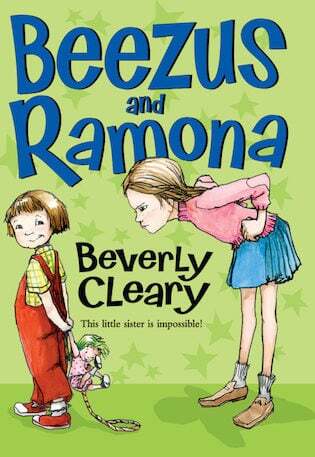
Selected books for children
This is a partial list of books by this very prolific writer. Link through for a complete bibliography.
Henry Huggins series (1950 – 1964)
Henry Huggins (1950)Henry and Beezus (1952)Henry and Ribsy (1954)Henry and the Paper Route (1957)Henry and the Clubhouse (1962)Ribsy (1964)Ramona series (1955–1999)
Beezus and Ramona (1955)Ramona the Pest (1968)Ramona the Brave (1975)Ramona and Her Father (1977)Ramona and Her Mother (1979)Ramona Quimby, Age 8 (1981)Ramona Forever (1984)The Ramona Quimby Diary (1984)Ramona’s World (1999)Other well-known books (selected)
Ellen Tebbits (1951)Otis Spofford (1953)The Mouse and the Motorcycle (1965)Runaway Ralph (1970)Ralph S. Mouse (1982)Dear Mr. Henshaw (1983)Memoirs
A Girl from Yamhill (1988)My Own Two Feet (1995)More information
Wikipedia Reader discussion on Goodreads 100 Things You Might Not Know About Beverly Cleary Beverly Cleary, Age 100 (The New Yorker) New York Times obituary. . . . . . . . . .
*This is an Amazon Affiliate link. If a product is purchased by linking through, Literary Ladies Guide receives a modest commission, which helps maintain our site and helps it to continue growing!
The post Beverly Cleary, prolific author of children’s novels appeared first on Literary Ladies Guide.
December 13, 2021
Her First Time: Seduction and Loss of Innocence in 1920s Women’s Novels
How was seduction, loss of virginity, unplanned pregnancy, unbidden passion, and occasional betrayal portrayed in English and American novels of nearly one hundred years ago? This sampling of seduction and loss of innocence in 1920s women’s novels — by women authors — is fascinating and illuminating.
Here we’ll explore works by Vera Caspary, Viña Delmar, Ellen Glasgow, Edna Ferber, and Rosamond Lehmann. Excerpted from the forthcoming A Girl Named Vera can Never Tell a Lie: The Novels of Vera Caspary by Francis Booth. Reprinted with permission.
. . . . . . . . .
Music in the Street by Vera Caspary (1929)
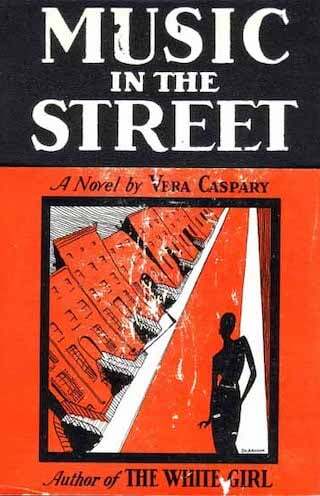
In Vera Caspary’s Music in the Street, 1929, Mae Thorpe moves away from her small-town family into a working girls’ home in Chicago, where at first, she is one of the unpopular girls with no boyfriend who stays home on a Saturday night. Then Mae finds a man, though he is by no means the kind of boy the popular girls would envy: Olyn is an artist, an intellectual, shy, socially awkward, and worst of all, poor and living at the YMCA.
“While Olyn was regarded suspiciously by the more hilarious because he neither smoked nor drank, he was accepted as Mae’s boyfriend. The girls teased her about him, made fun of his large collars and long neck, mocked his slow, serious manner of speaking, but they expected Mae to marry him.”
Still, despite Olyn taking her to the Art Institute of Chicago and other places her housemates would sneer at, when the phone rings at Rolfe House and her name is called, Mae feels as though she has finally made it. “Mae stepped forward with an air of importance. She was being called by her boyfriend and she had a large audience.” And when they go out together, Mae feels she has become part of the life of the city at last.
She was happy. She was a color in the spectrum, a figure in the parade. The lights winked merrily as if they knew how wonderful it was to be a girl going somewhere in the city with her boyfriend.
Mae hears music in the street. But the relationship has difficulty progressing. Since both of them live in hostels, there is no chance for them to be alone, no privacy anywhere. It is a long time before they even kiss.
After much argument she allowed him to press his eager timid lips against her lips while he breathed heavily through distended nostrils to show his rapture.
But then someone far more romantic comes along – Boyd Wheeler, a salesman. He has been coming into the drugstore where Mae works on a regular basis and she has always liked him, but never had the courage to talk to him. Eventually one of her friends from Rolfe House introduces them. He takes her out – to a theatre and a restaurant rather than an art gallery. Boyd wastes no time, even though this is the first date.
In the taxicab he kissed her. She knew it would have been better if she turned her head away. She knew it was not right for him to kiss her so fervently the first time he took her out. But with his lips hard against her lips, with his cheek brushing her cheek with its burning masculine roughness, she had no strength for resisting. He was an insolent lover and she was happy.
Boyd is clearly not going to give up until he gets his way, and eventually he does. After only a few more dates, he takes her to a seedy hotel. Mae cannot have any doubt about what is inevitably going to happen when she gets there, “but her body stiffened and she held him at a distance. She was frightened.” Mae still doesn’t run away. Here is Caspary’s bleak description of a young single virgin giving herself to a man before marriage at the end of the 1920s.
There was a crack in the wallpaper. She stared at it as if she were fascinated by the thin jagged line of the crack. The room vanished. All she could see was the wallpaper with its faded flowers and the ugly brown crack. Minutes passed. Years passed.
Boyd moved. The bed spring creaked.
Mae turned her head. She saw Boyd sitting there fingering the knot in his brown tie. Like a person who has been unconscious she was suddenly aware of the room around her and the iron bed and Boyd’s raccoon coat hung carefully on the costumer. She looked intently at her lover. She saw his short nose and his proud crest of curly hair.
“You’ve got naturally curly hair,” she heard her voice saying. “I love naturally curly hair.” Then Boyd took her in his arms and she was afraid no longer.
. . . . . . . . .
Bad Girl by Viña Delmar (1928)
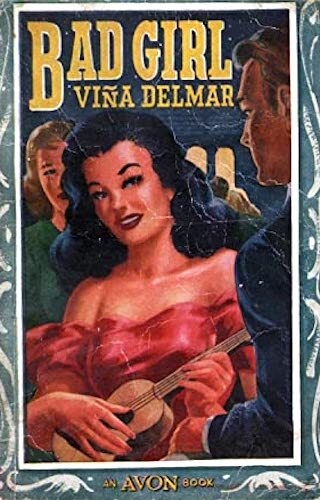
It’s interesting to compare the description of Mae’s first time with an equivalent passage in a more deliberately sensational novel from the year before that has several parallels to Music in the Street: Viña Delmar’s Bad Girl (1928). Dot is also a working girl like Mae, but unlike Mae she still lives with her father and overprotective brother; he is so overprotective that it is the fear of going home late that makes her stay the night with boyfriend Eddie.
At first, like Mae, Dot goes as far as passionate kissing, but no further. “Dot felt his hand on her knee. It was indecent. She could not discourage it without shaking off his kiss, and the kiss was very sweet.” But Eddie doesn’t want to stop. And Dot is not sure if she wants him to. Here is Delmar’s description of Dot’s becoming the “bad girl” she has always been warned about.
“You see, I ain’t used to stopping. You get what I mean?”
“Yes, I get it.”
“Well, it looks like a kiss or so is all you want out of this thing. You’re not upset if we stop after hot loving.”
“Is that so?” Asked Dot, unexpectedly.
“Are you? Do you feel that there should be more?”
He sat up suddenly on the edge of the bed and looked down at her with hope and incredulity mixed in his expression. She said nothing. She was thinking of what it would be like to be a bad girl. People would know about it perhaps. Eddie might tell. Then she’d have to go away to a place where nobody knew her.
“Dot, answer me.”
She said what was on her mind. “I’d be a bad girl.”
“No, you wouldn’t. Bad girl is something different. You’d never let anybody else touch you, would you?”
“I don’t know,” she said after a minute’s hesitancy. “I never thought I would let you go the whole way with me.”
It took time for the full meaning of her words to penetrate. When it did he looked at her face and found that her eyes had been waiting to meet his. “Do you mean that you’re going to let me?”
“I guess so, Eddie.” Pause. “Yes, I’m going to let you.”
“Now?”
“If you want to.”
“If I want to? Gee, Kid, you say crazy things.”
In Music in the Street, Boyd had tried the same argument with Mae – if you only go with one man, you’re not a bad girl. “What would you think of me if I slept with any man that asked me?”
And Boyd had had a very similar response to Eddie’s. “I’d think you were a tart. But I’m not any man, am I? All these weeks, Mae, I’ve been trying to show you that I wasn’t just trying to make you. I didn’t think there were girls like you anymore. I thought the species was extinct. All the girls I know are broadminded.”
. . . . . . . . .
So Big by Edna Ferber (1924)
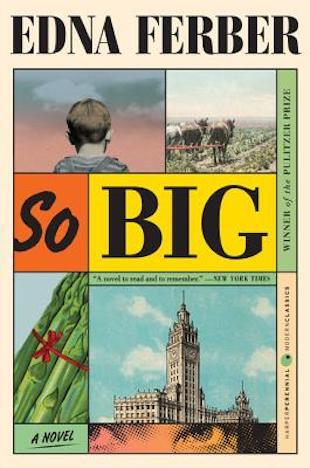
In Edna Ferber’s So Big, the bestselling (and subsequently Pulitzer Prize-winning) novel of 1924, there is a different kind of seduction scene from the two we have just seen: this time the man isn’t a cynical chancer from the big city constantly badgering the girl to go further.
After her itinerant gambler father dies, Selina has moved ten miles outside Chicago to teach in a rural Dutch settlement. She is giving private lessons to the simple, “gentle giant” Pervus de Jong, according to whose thoughts:
“Selina was a girl in experience. She was a woman capable of a great deal of passion, but she did not know that. Passion was a thing no woman possessed, much less talked about. It simply did not exist, except in men, and then was something to be ashamed of, like a violent temper, or a weak stomach.”
But during one of their one-on-one math lessons, Selina’s passion becomes obvious, to herself at least.
Selina kept her eyes resolutely on the book. Yet she saw, as though her eyes rested on them, his large, strong hands. On the backs of them was a fine golden down that deepened at his wrists. Heavier and darker at the wrists. She found herself praying a little for strength—for strength against this horror and wickedness. This sin, this abomination that held her. A terrible, stark, and pitiful prayer, couched in the idiom of the Bible. “Oh, God, keep my eyes and my thoughts away from him. Away from his hands. Let me keep my eyes and my thoughts away from the golden hairs on his wrists. Let me not think of his wrists … A something in his voice—a note—a timbre. She felt herself swaying queerly, as though the whole house were gently rocking. Little delicious agonizing shivers chased each other, hot and cold, up her arms, down her legs, over her spine … “plus the square of the units is the same as the sum twice the tens … twice … the tens … the tens…” His voice stopped.
Selina’s eyes leaped from the book to his hands, uncontrollably. Something about them startled her. They were clenched into fists. Her eyes now leaped from those clenched fists to the face of the man beside her. Her head came up, and back. Her wide startled eyes met his. His were a blaze of blinding blue in his tanned face. Some corner of her mind that was still working clearly noted this. Then his hands unclenched. The blue blaze scorched her, enveloped her.
Her cheek knew the harsh cool feel of a man’s cheek. She sensed the potent, terrifying, pungent odor of close contact—a mixture of tobacco smoke, his hair, freshly laundered linen, an indefinable body smell. It was a mingling that disgusted and attracted her. She was at once repelled and drawn. Then she felt his lips on hers and her own, incredibly, responding eagerly, wholly to that pressure.
End of chapter. The next chapter begins “They were married the following May, just two months later.”
. . . . . . . . .
Barren Ground by Ellen Glasgow (1925)
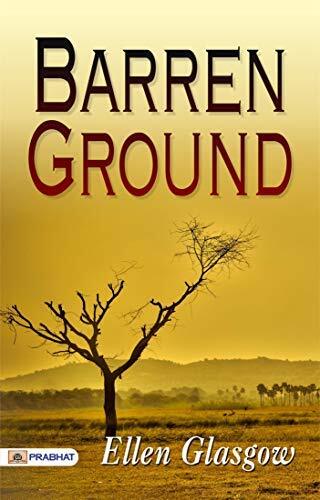
Ellen Glasgow’s Barren Ground also portrays first-time sex in a poverty-stricken rural setting, this time in Virginia. Twenty-year-old Dorinda Oakley, working in a shop, falls in love with the doctor’s son Jason Greylock. He promises to marry her, though it would be against his father’s will, and neither of them have any money.
“After we’re married I can keep on in the store just the same.”
He laughed. “Ten dollars a month will hardly keep the fox from the henhouse.”
Bending his head he began to kiss; her in quick light kisses; then, as his ardor increased, in deeper and longer ones; and at last with a hungry violence. Though her love was the only thing that was vivid to her, she had even now, while she felt his arms about her and his lips seeking hers, the old haunting sense of impermanence, as if the moment, like the perfect hour of the afternoon, were too bright to endure. However much she loved him, she could not sink the whole of herself into emotion; something was still left over, and this something watched as a spectator. Ecstasy streamed through her with the swiftness of light; yet she never lost completely the feeling that at any instant the glory might vanish and she might drop back again into the dull grey of existence.
Like Mae, Dot, and Selina, Dorinda gets pregnant – the barren ground of the title turns out to be ironic. Dot’s and Selina’s men stay with them, Mae’s and Dorinda’s marry someone else – in Dorinda’s case because Jason’s father makes him.
He had wronged her; he had betrayed her; he had trampled her pride in the dust; and he had done these things not from brutality, but from weakness. If there had been strength in his violence, if there had been one atom of genuine passion; in his duplicity, she might have despised him less even while she hated him more.
Dot and Selina keep their babies. In Music in the Street, Mae tries unsuccessfully to have an abortion but in Barren Ground Dorinda goes to New York City looking for a better life. There she is knocked down by a cab in the street and miscarries; Dorinda is relieved.
She would have liked a child if it had been all hers, with nothing to remind her of Jason. For a second she had a vision of it, round, fair and rosy. Then, “it might have had red; hair,” she reminded herself, “and I should have hated it.”
The doctor who treats Dorinda subsequently employs her as a nurse for his children and asks her to marry him. She doesn’t, she wants something better. But after her father’s death, Dorinda returns to the farm and tries to bring fertility to its barren ground. Much later in her life, when she hears Jason has died, Dorinda feels ambivalent: she has never forgotten the first time though the scar has faded.
The passion that had ruined her life thirty years ago was nothing, was less than nothing, to her to-day. She was not glad that he was dead. She was not sorry that he had died alone … He had wasted his life, he had destroyed her youth; yet in a few hours death had thrown over him an aspect of magnanimity.
. . . . . . . . .
Dusty Answer by Rosamond Lehmann (1927)
And finally, same-sex love, rather than sex, appears in a 1927 work by an English novelist, Rosamond Lehmann. The first lesbian novel is usually said to be The Well of Loneliness by Radclyffe Hall (1928) but Lehmann’s Dusty Answer precedes it by a year. As in Hall’s novel, there’s no explicit lesbian sex, but a strongly implied relationship between two girls at college. Noted by outraged critics of the time, one of whom wrote an article in the London Evening Standard titled “The Perils of Youth,” addressing what he presumed to be the degenerate readers of Lehman’s novel:
To all these sex-ridden young men and women I would counsel, as the best remedy for their troubles, silence and self-control. And I would have them remember that all their discussions will never carry them back beyond the plain unvarnished statement of Genesis, “Male and female created He them.”
Lehmann herself said that the critics regarded her works as “the ravings of a nymphomaniac.”
Despite her crush on her friend Jennifer, Judith Earle first gives herself to a man, a childhood neighbor whom she meets again in later life:
Now the little boy Roddy was this tall man whose shoulder touching hers was more bewildering than the moonrise; whose head above hers was a barrier looking out the world… The web had broken. Roddy had shaken himself free and come close at last. The whole of their past lives had led them inevitably to this hour.
He put his hand beneath her chin and turned her face up to his.
“Lovely Judy. Lovely dark eyes . . . Oh your mouth. I wanted to kiss it for years.”
“You can kiss it whenever you want to. I’d love you to kiss me. All of me belongs to you.”
He muttered a brief “Oh!” Beneath his breath, and seized her, clasped her wildly. She could neither move nor breathe; her long hair broke from its last pins and fell down her back, and he lifted her up and carried her beneath the unstirring willow trees.
It seems as though Roddy has taken Judith’s virginity – or she has given it to him – under the willow trees but, as with Ferber’s So Big, it happens offstage, as it were, in a lacuna in the text; it is only implied here but she confirms it later on. Roddy does not love Judith and does not even want to see her after the incident but still she doesn’t regret it, such as it was.
It’s undoubtedly a coming of age moment for Judith, though not the final one. On the rebound, and only to hurt Roddy, she agrees to marry Martin, Roddy’s cousin and another of her childhood neighbors; he is very sweet and charming to her and loves her completely, but she can’t really see him as anything other than a childhood friend.
Then, while traveling, Judith meets Julian, the third of the cousins who used to live next door to her; he is now a world-weary, experienced, and cynical playboy who offers to make her his mistress, though he makes it clear he is not interested in marriage.
Julian must save her this time: surely his wit and wisdom, surely the unknown world of sexual, emotional and intellectual experience which he held so temptingly, just out of reach – surely these would, in time, heap an abiding mound upon the past.
But following the news of Roddy’s death, before she has chance to sleep with Julian, she changes her mind, falsely implying to him that she is still a virgin.
“Julian – I couldn’t give you – what you wanted. I couldn’t! It’s such a step – you don’t realize – for a woman. She can’t ever go back – afterwards, and be safe in the world. And she might want to.”
Related Content on Vera Caspary The White Girl by Vera Caspary, Forgotten Contemporary of Nella Larsen’s Passing Vera Caspary’s The White Girl and Other “Passing” Novels of the 1920s The Ultimate Caspary Woman: Laura by Vera Caspary Laura: The 1944 Film Based on the Novel by Vera Caspary Is Vera Caspary’s Bedelia the Wickedest Fiction Anti-Heroine?
. . . . . . . . .
Contributed by Francis Booth,* the author of several books on twentieth-century culture: Amongst Those Left: The British Experimental Novel 1940-1960 (published by Dalkey Archive); Everybody I Can Think of Ever: Meetings That Made the Avant-Garde; Girls in Bloom: Coming of Age in the Mid-Twentieth Century Woman’s Novel; Text Acts: Twentieth-Century Literary Eroticism; and Comrades in Art: Revolutionary Art in America 1926-1938.
Francis has also published several novels: The Code 17 series, set in the Swinging London of the 1960s and featuring aristocratic spy Lady Laura Summers; Young adult fantasy series The Watchers; and Young adult fantasy novel Mirror Mirror. Francis lives on the South Coast of England. He is currently working on High Collars and Monocles: Interwar Novels by Female Couples.
. . . . . . . . .
*This is an Amazon Affiliate link. If a product is purchased by linking through, Literary Ladies Guide receives a modest commission, which helps maintain our site and helps it to continue growing!
The post Her First Time: Seduction and Loss of Innocence in 1920s Women’s Novels appeared first on Literary Ladies Guide.
December 6, 2021
Fact and Fiction in All This, and Heaven Too: The 1938 Novel and 1940 Film
When it was freshly published in 1938, Rachel Field’s bestselling novel All This, and Heaven Too kept company on the shelf with other contemporary novels titled with allusions to Christianity but preoccupied with romance. Here we’ll be taking a look at the 1940 film All This, and Heaven Too in the context of the novel that it was based on.
Consider E.M. Delafield’s Thank Heaven Fasting (1932), in which the touch of Captain Lane’s hand has Monica muse: “This, surely, was love—the most wonderful thing in life.” Or Janie’s relationships and search for fulfillment in Zora Neale Hurston’s Their Eyes Were Watching God (1937). Or, soon after, the complicated social expectations in the courtship depicted in Gwethalyn Graham’s Earth and High Heaven (1944).
Indeed, the opening shots of the Warner Bros. film are of the sky—a heavenward if not beatific gaze. It’s a winter sky, presumably—as filming began February 8, 1940—with treetops caught in a tumultuous wind, and only a few leaves clinging to branches.
This scene suits the complex, fascinating story of Henriette Deluzy-Desportes (1813–1875). The film—and the first half of Rachel Field’s novel—focuses on six years in Paris, beginning in 1841, when Henriette was in the employ of the Duc and Duchesse de Praslin. Henriette’s position ended abruptly, shadowed by scandal; rumors persisted about her involvement with the family—the Duc, in particular—in the absence of the Duchesse.
. . . . . . . . . .
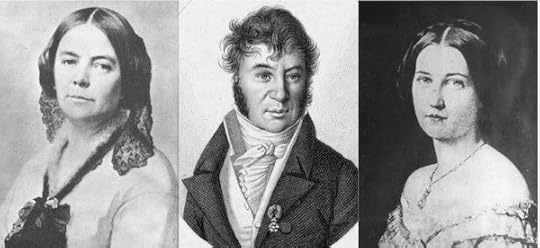
The real cast of characters in the Praslin scandal: Helen Deluzy-Desportes,
and the Duc and Duchesse de Praslin
. . . . . . . . . .
Her story also could have nestled on bookshelves with F. Tennyson Jesse’s novel, A Pin to See the Peepshow (1934), which fictionalizes the Thompson-Bywaters murder case of 1922. The story tells of a couple accused and convicted of murdering the woman’s husband. In Field’s novel, soon after Henriette’s employment with the de Praslin family ends, the Duchesse is murdered. The Duc dies a few days later, having poisoned himself with arsenic, all the while maintaining his innocence.
An additional layer of complication exists for Field’s work, however, for as with Daphne du Maurier’s fictionalized version of her ancestor’s life in Mary Anne (1954), Rachel Field is telling her great-aunt’s story in All This, and Heaven Too. After the murder-suicide scandal, both in the fictionalized version and in real life, Henriette Deluzy-Desportes became Henriette Desportes Field in 1851, when she married Rachel Field’s great-uncle.
Thus, Field had a vested interest in Henriette’s perspective and the novel opens with an imagined letter to her long-departed great-aunt: “My forefinger has grown none the less curious in the thirty more years that I have been tracing your legend [via the letters carved into a tombstone].”
Her influences are both personal and cultural, however. Alison L. McKee considers All This, and Heaven Too “a reformulation of Jane Eyre, in which a governess falls in love with a man married to a madwoman, a man who may occupy a superior position in society but whose moral character is inferior to that of the governess.” (From McKee’s 1995 essay: “’L’affaire Praslin’ and All This, and Heaven Too: gender, genre, and history in the 1940s woman’s film.”)
. . . . . . . . . .
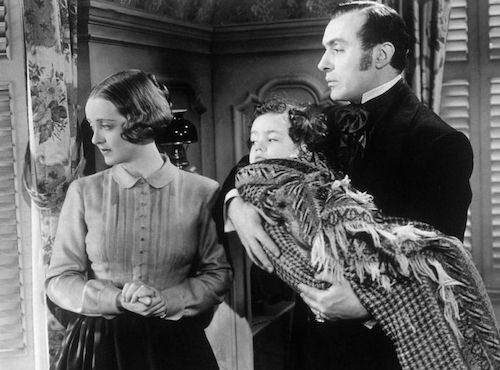
A scene from the 1940 film starring Bette Davis and Charles Boyer
. . . . . . . . . .
The governess lives to tell the tale, and her court testimony is in the historical record—the Duc’s perspective is also publicized and excerpts from the Duchesse’s letters are published. Field is also concerned with what has been left unsaid, what is outside of the narrative frame. This sense is also captured in the film, wherein Henriette’s version is presented as a story-within-a-story, once she resumes teaching and is compelled to offer her students an explanation:
“Perhaps I am wrong in telling it to you,” Henriette says, “but in a few years you will be women of an age to love and suffer … so perhaps it will not hurt you to learn that life is not always the pretty picture we might wish it to be.”
Field’s perspective is that there was enough suffering to go around. The Duchesse writes passionate and desperate letters to the Duc, but after an argument with her, the Duc tells Henriette: “I hope you will never understand what it is to be slowly smothered by a love which has become insufferable!”
McKee elaborates on the advantages that fiction offered Field: “The conventions of the historical romance allow Field to supply what has been missing: the emotional, affective register of Henriette’s experiences in the Choiseul-Praslin household which are elided from official accounts and misrepresented, she feels, in the gossip rags and mainstream press alike.”
. . . . . . . . . .
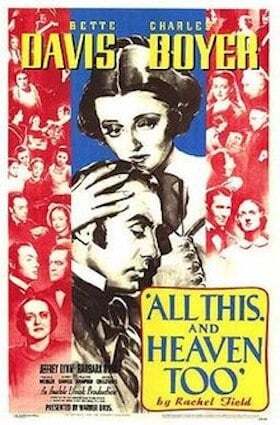
. . . . . . . . . .
Bette Davis and Her Stardom SecuredAs Henriette Deluzy-Desportes in the film adaptation of All This and Heaven, Too (directed by Anatole Litvak) appears in her forty-second film. In her autobiography, The Lonely Life (1962), Davis summarizes her career at that juncture: “In the year 1939, I secured my career and my stardom forever. I made five pictures in twelve months and every one of them was successful.”
Davis had successfully renegotiated her contract in the months immediately preceding this film’s production and Ed Sikov’s biography of her reports that she was making $4,500 a week while filming ATAHT. That’s how the studio referred to the film, mimicking the success of GWTW the preceding year; in fact, until Gone with the Wind premiered on December 20, 1939, Bette Davis had been expected to win the Best Actress Oscar for Dark Victory.
Warner Bros. was determined to outdo the epic David O. Selznick film with ATAHT with a budget of $1,075,000 (costs ultimately surpassed $2,500,000). Larry Swindell’s biography of Charles Boyer, who plays the Duc, also notes that ATAHT had sixty-seven sets, whereas GWTW had only fifty-three; and rivaled its lengthy run time.
. . . . . . . . .
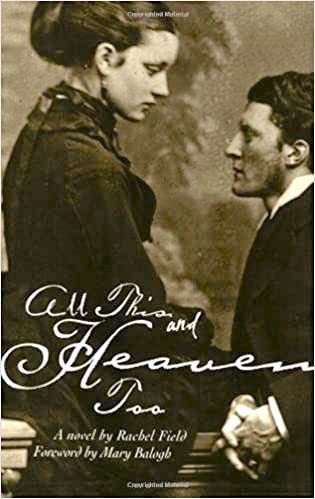
All This, and Heaven Too (the 1938 novel)
. . . . . . . . .
In the context of Bette Davis’s work, All This, and Heaven Too remains significant. Producer David Lewis wanted Greta Garbo to play Henriette, whereas others advocated for Helen Hayes, but Davis was well-suited for the role. She had experience with characters who occupied what Cathy Klaprat calls “constraining” environments, notably, the southern culture in her film Jezebel and the American southwest in The Petrified Forest.
In All This, and Heaven Too, Henriette is also constrained by her poverty, rumors of impropriety surrounding her parentage, her grandfather’s disapproval of her accepting a post in a family with different religious and political opinions than his, and her difficulty balancing loyalty towards all members of the household.
Klaprat also observes Davis’ previous roles in love triangles, including Dangerous, Cabin in the Cotton, and Of Human Bondage. (All this from her 1985 essay “The Star as Market Strategy: Bette Davis in Another Light.”) Romance is not Henriette’s priority in Field’s telling, however, but the children of the house. Fictionalized, Henriette is unequivocally loyal:
“…I loved them and I devoted my whole self to them. Their pleasures were my pleasures; their pain was my pain. Six years I watched over them by day and by night. They loved me with all the enthusiasm of their years, and I returned their love. I was without family ties, without friends, and all my feelings were bound up in my duties, which were so congenial and pleasant.”
. . . . . . . . .
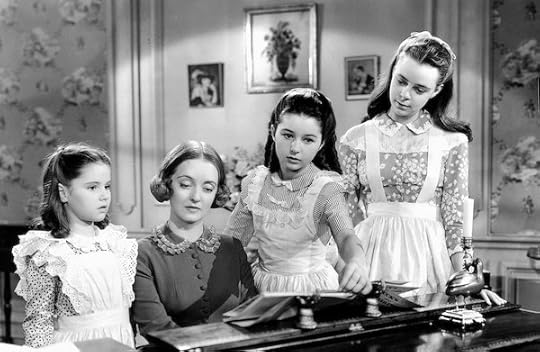
. . . . . . . . .
A Loyal Governess Navigates the Household HierarchyHer great-aunt’s feelings, Field believed, were confined to her charges. The governess only admired the Duc’s dedication to his family and his allowance for her service to their needs.
“She had expected … to find him formal and detached as became the head of one of the oldest and most influential families of France, and here he was full of concern for his children and eager to put her at her ease.”
The Duchesse, on the other hand, stymied her: “She’s beyond my comprehension—roused like a tigress and then forgetful of what provoked her anger. No, she could never make the Duchesse out. Whenever she tried to, her efforts ended in a baffled shrug of the shoulders.”
When Field describes Henriette’s disdain, it’s directed not towards the Duchesse but towards the children’s former governess, who retained a position in the service of the Duchesse:
“She knew this type too well—colorless, bitter-lipped, and ambiguous; one who would be overbearing with servants and those she considered inferior and would overdo her meeching and humility with superiors. Such a woman resented her position, yet had not the cleverness or good sense to take advantage of the possibilities it offered.”
Even here, Field depicts Henriette’s view as revolving around the children; if her concern was only for their welfare, she could not have been implicated either in a love relationship with the Duc or with a crime against the children’s mother. In Sikov’s biography of Bette Davis, he explains that “Field, Robinson [the screenwriter], and Litvak all believed in Henriette’s innocence.”
Sikov notes, in contrast, that Davis’s autobiography states that she believed Henriette and the Duc “must have been lovers. It was impossible for me to believe that they were not.”
. . . . . . . . . .
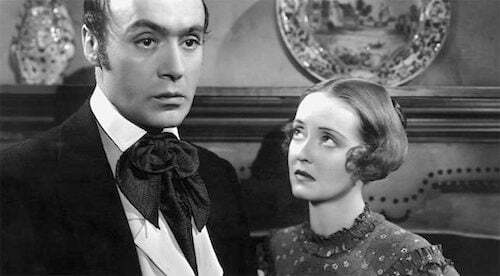
See the official trailer of All This, and Heaven Too
Stream the 1940 film adaptation on Amazon*
. . . . . . . . . . .
When it came to acting, Davis prioritized understanding over immersion in a role, as Lucy Fischer observes in “Bette Davis Worker and Queen.” She quotes her autobiography too, as evidence of Davis’s conviction that the actor should go “out of himself not in. He pretends to be this other human being” because a performance has “nothing to do with self-involvement but rather radiation.”
Davis radiates her understanding of Henriette’s position and conveys deep devotion and passion, with glances and gestures, even when the script remains dedicated to the concept of her purity.
One thing that all agree on: this is Henriette’s story, and all the others are bit parts. As McKee observes: “By the time she has finished her story at the end of the film, Henriette has even managed to position herself as a historical subject whose significance in history surpasses that of the king of France, whom she has banished to the margins of her own tale.”
Beyond the context of either novel or film, the Praslin affair was historically significant. It played an integral role in inflaming public opinion against the king, with this prominent family’s scandalous crime given their support of the monarchy. The official record is extensive, cataloged in the National Archives in Paris as CC 808-12 and AE V 243-94, and it was inventoried officially in 1847.
. . . . . . . . .
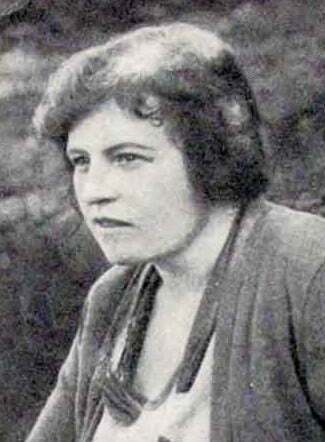
Learn more about Rachel Field,
the author of All This, and Heaven Too
. . . . . . . .
McKee’s research resulted in her undertaking an inventory in 1991, which revealed that “several letters and other documents written by different people (including the Duchesse) and listed in the inventory taken by the Cours des Pairs are missing.” Other scholars had noted previously their absence in the record and her consultations with archivists “indicated that the missing materials had not been officially removed or relocated.”
Field was correct in her belief that there were aspects of this story that would remain unknown. Other novelists have also found inspiration in the story, and have used fiction to explore complexities and contradictions in the situation: English author Marjorie Bowen’s Forget-Me-Not (1932) changes the names to retell the story, Nathaniel Hawthorne based Miriam in The Marble Faun (1860) on Henriette, and Nicaraguan author Gioconda Belli’s Las Fiebres de la Memoria (2018) explores the theory that the Duc survived and lived out the remainder of his life in Nicaragua.
Ruth Ozeki’s observation about writing, and the complex relationship between fact and fiction, fits here: “I think all characters are facets of the writer. In a way, they have to be if you’re going to write them convincingly.” Rachel Field’s fictionalized biography of her great-aunt was a resounding success—not because we are convinced of either her guilt or innocence, but because either of these possibilities could be true.
Contributed by Marcie McCauley, a graduate of the University of Western Ontario and the Humber College Creative Writing Program. She writes and reads (mostly women writers!) in Toronto, Canada. And she chats about it on Buried In Print and @buriedinprint.
. . . . . . . . . .
*This is an Amazon Affiliate link. If a product is purchased by linking through, Literary Ladies Guide receives a modest commission, which helps maintain our site and helps it to continue growing!
The post Fact and Fiction in All This, and Heaven Too: The 1938 Novel and 1940 Film appeared first on Literary Ladies Guide.
Vera Caspary’s The White Girl and Other “Passing” Novels of the 1920s
The White Girl by Vera Caspary (1929) bears comparison to several other novels about the subject of “passing,” released around the same time. Passing as white was a theme that fascinated authors of the 1920s, both within and outside of the Harlem Renaissance movement.
Following is an exploration of several 1920s novels of passing by Caspary and two by Jewish women writers like herself, as well as the renowned works of two Black authors of that era, Nella Larsen and Jessie Redmon Fauset.
Excerpted from the forthcoming book A Girl Named Vera Can Never Tell a Lie: The Novels of Vera Caspary by Francis Booth, reprinted with permission.
. . . . . . . . . .
The White Girl by Very Caspary (1929)
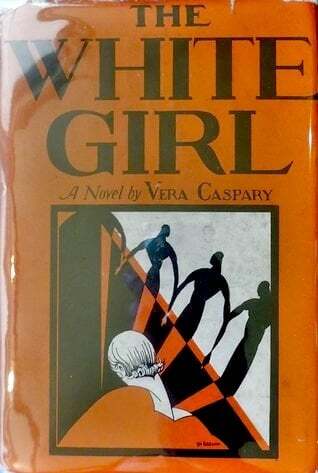
At the time she was writing The White Girl, Vera Caspary was also editing a dance magazine in New York and socializing with male Black dancers; she felt this gave her at least some credibility in writing this novel.
“I felt that my new friends could look through my pale flesh and see guilt. A word that hinted of flesh tints set me so on edge that I’d change the subject at once. They spoke easily of blacks and white people. One evening I sat with Pierce and a couple of his friends, telling jokes and speaking of many things, and suddenly he said, ‘Why, Miss Caspary, I forgot that you were white.’”
The model for Solaria, the central character in The White Girl was a girl Caspary had known at school, though only from a distance and an exotic figure for her.
“One day I had read in a newspaper an item about a black girl passing as white. The idea touched a vulnerable spot: guilt, unconscious until then, suddenly become an irritation. In my class at high school there had been a girl so lovely that I could never forget her, a quiet beauty with flesh as white and opaque as a camellia, flawless features, and eyes like sparkling jet. I had admired but never talked to her, never walked with her along the school corridor. Why? Why the aloofness, the pretense of blindness, the deaf ear to black classmates?”
Solaria, the central character in The White Girl, has a Black family and is very striking and attractive to men of all races; like Clare, she “passes” successfully.
“She was a tall girl with a languorous fine figure, small hips, exquisite breasts, and a narrow head carried high on a sensitive neck. Her wide-set dark eyes were dusky mirrors, mysterious, hardly alive. Her nose was straight and arrogant, set bravely above a short upper lip. With her fine black hair and white face, she looked as if she might be a Spanish aristocrat.”
After many trials, about midway through the story, Solaria is alone and constantly in debt, wondering why she did not marry the rich Black man in Chicago who wanted her so badly. “For the life of her she could not see what she had gained by passing.”
Solaria meets and falls in love with a moderately wealthy white man called David whose family is from snobby, ultra-white Scarsdale in Westchester County. She is constantly worried about her secret being uncovered.
Nella Larsen’s novel ends with tragedy as a result of Clare’s passing. Caspary had originally written an ending with what she called “a note of wry honesty.” The heroine, who had deceived and lost her lover had, like all working girls, to keep on with her job. But Caspary’s publisher didn’t like it and “wanted the story to end sensationally. Publishers and editors, I thought, must certainly be wiser than a young writer. I changed the ending.”
See an in-depth analysis of The White Girl in the context of Nella Larsen’s Passing.
. . . . . . . . . .
Passing by Nella Larsen (1929)
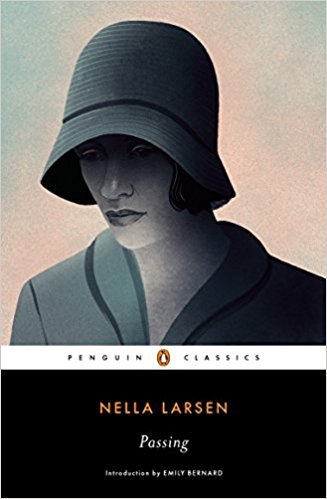
Passing by Nella Larsen was first published, like The White Girl, in New York in 1929, though a few months later. Larsen’s novel received more tepid reviews and fewer sales than Caspary’s, though both the settings and subject are quite similar.
In Larsen’s novel, Clare, whose father is a janitor (like Solaria’s in The White Girl), passes so successfully that her white husband never suspects she is Black until later on, when she reunites with an old friend who is involved in the (fictional) Negro Welfare League. Clare’s friend Irene has a Hispanic look.
“They always took her for an Italian, a Spaniard, a Mexican, or a Gypsy. Never, when she was alone, had they even remotely seemed to suspect that she was a Negro.”
Like Clare, their mutual friend Gertrude has married later a white man. Irene reflects:
“… though it couldn’t be truthfully said that she was ‘passing.’ Her husband—what was his name? — had been in school with her and had been quite well aware, as had his family and most of his friends, that she was a Negro. It hadn’t, Irene knew, seemed to matter to him then. Did it now, she wondered.”
Irene does not herself consciously try to “pass,” and she is curious about Clare and “this hazardous business of ‘passing,’ this breaking away from all that was familiar and friendly to take one’s chance in another environment, not entirely strange, perhaps, but certainly not entirely friendly.” When Clare asks Irene if she never thought of passing, Irene answers quickly “No. Why should I?”
For her part, Irene finds that her annoyance at women who try to pass “arose from a feeling of being outnumbered, a sense of aloneness, in her adherence to her own class and kind; not merely in the great thing of marriage, but in the whole pattern of her life as well.” Irene feels that she is betraying her race by helping Clare hide her origin from her husband, but is also reluctant to betray her friend in support of her race:
“… she shrank away from the idea of telling that man, Clare Kendry’s white husband, anything that would lead him to suspect that his wife was a Negro. Nor could she write it, or telephone it, or tell it to someone else who would tell him. She was caught between two allegiances, different, yet the same. Herself. Her race. Race! The thing that bound and suffocated her. Whatever steps she took, or if she took none at all, something would be crushed. A person or the race. Clare, herself, or the race. Or, it might be, all three.”
When her husband finds out, he accuses Clare of being a “damned dirty n–!” Clare falls out of the window and dies, though it isn’t clear whether she was pushed or if she has killed herself rather than carry on with her life after her racial heritage has been revealed. See a detailed analysis of Passing by Nella Larsen.
. . . . . . . . . . .
Plum Bun by Jessie Redmon Fauset (1928)
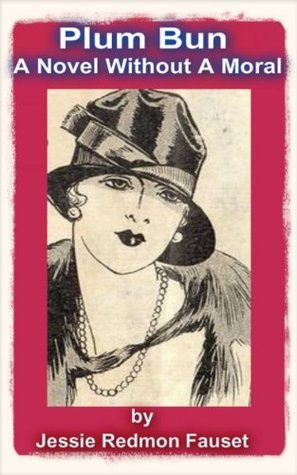
Even closer to The White Girl than Passing is Jessie Redmon Fauset’s Plum Bun. Fauset, a talented student, was denied admission to Bryn Mawr because of her race. She went instead went to Cornell University and graduated in classical languages, then earned a Master’s degree in French at the University of Pennsylvania. Fauset was literary editor of the NAACP’s magazine, The Crisis, starting in 1919.
Plum Bun is also about a Black girl, Angela Murray, who is light enough to “pass,” and does so, even though her sister Virginia – like Solaria’s brothers in The White Girl – cannot. Like Solaria’s parents, Angela’s are proud of their race, and she is not.
“The stories which Junius and Mattie told of difficulties overcome, of the arduous learning of trades, of the pitiful scraping together of infinitesimal savings; would have made a latter-day Iliad, but to Angela they were merely a description of a life which she at any cost would avoid living. Somewhere in the world were paths which lead to broad thoroughfares, large, bright houses, delicate niceties of existence. Those paths Angela meant to find and frequent.”
Angela’s light-skinned mother also “passes,” but only part-time, and only as an amusement. To her it is simply a game:
“It was with no idea of disclaiming her own that she sat in orchestra seats which Philadelphia denied to colored patrons. But when Junius or indeed any other dark friend accompanied her she was the first to announce that she liked to sit in the balcony or gallery.”
Angela’s father is amused by and encourages his wife’s escapades: Junius “preferred one of his wife’s sparkling accounts of a Saturday’s adventure in ‘passing’ to all the tall stories told by cronies at his lodge.”
At school, Angela has a friend who seems unaware of her racial background. When the friend finds out about Angela she is outraged. “Colored! Angela, you never told me that you were colored!” At this age, Angela is still color blind and has no idea of the implications. “Tell you that I was colored! Why of course I never told you that I was colored. Why should I?”
After their parents die, Angela and her sister share the money from the house and the insurance money; both end up in New York City. Virginia embraces the life and people of Harlem; Angela stays downtown and enrolls in art college, still naïvely assuming her color will not be a barrier.
“She had not mentioned the fact of her Negro strain, indeed she had no occasion to, but she did not believe that this fact if known would cause any change in attitude. Artists were noted for their broad-mindedness.” Still, even Angela sees the attraction of Harlem, the camaraderie, the community, the richness and seething flow of life in a “walled city” where everyone is equal.
“Nowhere downtown did she see life like this. Oh, all this was fuller, richer, not finer but richer with the difference in quality that there is between velvet and silk. Harlem was a great city, but after all it was a city within a city, and she was glad, as she strained for last glimpses out of the lurching ‘L’ train, that she had cast in her lot with the dwellers outside its dark and serried tents.”
But downtown, Angela still feels constrained from making close friends while Virginia is living with her. “Two of the girls had asked her to their homes but she had always refused; such invitations would have to be returned with similar ones and the presence of Jinny would entail explanations.”
Angela then meets the very white, very wealthy Roger. “She had never seen anyone like him: so gay, so beautiful, like a blond, glorious god, so overwhelming, so persistent.” She sees that marrying Roger could be her ticket to the life she covets. “She saw her life rounding out like a fairy tale. Poor, colored—colored in America; unknown, a nobody! And here at her hand was the forward thrust shadow of love and of great wealth.”
Roger turns out to be a racist: while he is having a meal in a restaurant with Angela, Roger insists that the management expel a colored family. Angela finally sees him in his true colors. “He had blackballed Negroes in Harvard, aspirants for small literary or honor societies. ‘I’d send ’em all back to Africa if I could,’” Roger says to Virginia. It then turns out that he has no intention of marrying her but wants to set her up in an apartment as his mistress.
Angela does eventually “come out,” when she and another woman from the art college both win prizes to live in Paris. But the other woman is known to be “colored” and the prize is withdrawn on the grounds that other passengers on the boat to Europe may be offended by her presence.
Angela is outraged and reveals herself in sympathy, knowing that she will also lose her prize. However, both of them keep the money and Angela decides to go to Paris anyway, on her own. Before she goes, she is reconciled with her sister.
“All of the complications of these last few years, — and you can’t guess what complications there have been, darling child, — have been based on this business of ‘passing.’”
See another detailed analysis of Plum Bun by Jessie Redmon Fauset.
. . . . . . . . . . .
Show Boat by Edna Ferber (1926)
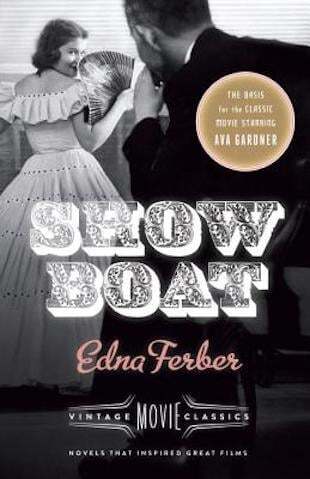
Like Vera Caspary, Edna Ferber was a Jewish woman author who began protesting against the rise of fascism early on, and also wrote sympathetically about race. Ferber’s Show Boat, 1926, better known as a musical and three films, isn’t about race specifically but does have a subplot concerning “passing.”
The characters in the novel all live on a showboat traveling up and down the Mississippi giving theatrical performances. Julie Dozier is one of the actresses, married to the actor Steve. Julie thinks no one knows that she had a Black mother and a white father, but someone has found out and told the local sheriff in the town where the boat is moored. It turns out to be one of the engineers who liked Julie and was upset when she would have nothing to do with him.
“Miscegenation. Case of a Negro woman married to a white man. Criminal offense in this state, as you well know,” says the sheriff when he boards the boat. But before the sheriff arrives, Steve, to everyone’s astonishment, has sliced a sharp knife through Julie’s forefinger.
“A scarlet line followed it. He bent his blond head, pressed his lips to the wound, sucked it greedily.” So when the sheriff says that, in Mississippi, “one drop of n– blood makes you a n– in these parts,” Steve is able to say truthfully, “Well, I got more than a drop of – n– blood in me, and that’s a fact. You can’t make miscegenation out of that.”
So, according to Mississippi’s racist laws, Steve is now Black because he literally has Negro blood inside him. The sheriff, however, is not impressed and makes sure the boat’s crew understands that if they go ahead with their performance that night there will be dire consequences. “You go to work and try to give your show with this mixed blood you got here and first thing you know you’ll be riding out of town on something don’t sit so easy as a boat.”
The other actress on the boat, Elly, who is the very white, racist “ingénue lead,” screams at Julie, “The wench! The lying black –” Elly threatens to leave if Julie doesn’t, and Ferber, as her author, makes clear her own views on racism: vile, obscene, and ugly.
“She gets out of here with that white trash she calls her husband or I go, and so I warn you. She is black! She is black! God, I was a fool not to see it all the time. Look at her, the nasty yellow –” a stream of abuse, vile, obscene, born of the dregs of river talk heard through the years, now welled to Elly’s lips, distorting them horribly.
The rest of the crew is sympathetic, and the central character, Magnolia, young as she is and never having known any life other than that of the boat, knows where she stands: Magnolia says to the sheriff, “You’re a bad mean man, that’s what! You called Julie names and made her look all funny. You’re a –”
At this point her mother stops Magnolia from going any further. Still, despite their sympathy, the crew knows that Julie and Steve cannot stay; they leave the boat with dignity, transcending the racism they leave behind. “Julie’s slight figure was bent under the weight of the burden she carried. You saw Steve’s fine blond head turned toward her, tender, concerned, encouraging.”
Read more about Showboat by Edna Ferber.
These are just four of many novels written by both Black and white authors, female and male, about racial identity and passing in the 1920s. Other notable works in this genre by male authors include Cane by Jean Toomer (1923) and The Autobiography of an Ex-Colored Man by James Weldon Johnson. The latter was first published anonymously by a small press, then reissued in 1927 by Alfred A. Knopf, when Johnson had already achieved major stature as a civil rights leader and literary figure.
. . . . . . . . .
Contributed by Francis Booth,* the author of several books on twentieth-century culture: Amongst Those Left: The British Experimental Novel 1940-1960 (published by Dalkey Archive); Everybody I Can Think of Ever: Meetings That Made the Avant-Garde; Girls in Bloom: Coming of Age in the Mid-Twentieth Century Woman’s Novel; Text Acts: Twentieth-Century Literary Eroticism; and Comrades in Art: Revolutionary Art in America 1926-1938.
Francis has also published several novels: The Code 17 series, set in the Swinging London of the 1960s and featuring aristocratic spy Lady Laura Summers; Young adult fantasy series The Watchers; and Young adult fantasy novel Mirror Mirror. Francis lives on the South Coast of England. He is currently working on High Collars and Monocles: Interwar Novels by Female Couples.
. . . . . . . . .
*This is an Amazon Affiliate link. If a product is purchased by linking through, Literary Ladies Guide receives a modest commission, which helps maintain our site and helps it to continue growing!
The post Vera Caspary’s The White Girl and Other “Passing” Novels of the 1920s appeared first on Literary Ladies Guide.
December 1, 2021
Signed Genêt: Janet Flanner’s Letters from Paris
Janet Flanner (March 13, 1892 – November 7, 1978) was an American writer and journalist, best known for her fifty-year stint as The New Yorker’s Paris correspondent. Writing under the pen name Genêt, she became synonymous with the inter-war expatriate scene in Paris, and her prose style epitomized and influenced the magazine’s journalism to such an extent that it came to be known as “The New Yorker style.”
Over the years, her work for the magazine extended far beyond Paris into broader European politics and culture, encompassing a regular “London letter” and several one-off pieces from a war-scarred Germany.
Her legacy was such that even she was forced to acknowledge, towards the end of her life, that she had created “the form which all other foreign letters consolidated by copying my copy…” and Glenway Westcott called her “the foremost remaining expatriate writer of the Twenties.”
Beauty with a capital “B”
Janet was in her late twenties when she decided to move abroad, leaving behind her Indiana roots, her family, and her husband Lane Rehm (whom she would amicably divorce some years later). Having grown up in the stifling comfort of the Indianapolis middle class, she had made her first break when she joined the Indianapolis Star as its first cinema reporter, and her second when she moved to New York to be with Lane, then making his way as an artist in Greenwich Village.
The third break would be permanent. Together with her new partner, Solita Solano (née Sarah Wilkinson), she chose to travel across the Atlantic in an attempt to find “beauty, with a capital B … I was consumed by the own appetite to consume — in a very limited way, of course, the beauties of Europe.”
And, although she didn’t articulate it at the time, she was also attempting to find freedom from the professional, personal, and sexual restrictions that she already knew American society would impose, even in the bohemian enclave of Greenwich Village. As a lesbian writer who had no desire to hide, she felt as if America had nothing to offer.
After some traveling through Europe, they finally settled in Paris in autumn 1922, taking rooms at the small Hôtel Saint-Germain-des-Prés at 36 rue Bonaparte. The hotel would be their base for the next sixteen years.
Making a home in Paris
Both Janet and Solita quickly made friends among the American expatriates in the city. F. Scott Fitzgerald was a regular visitor to their hotel, as was a young Ernest Hemingway. Hemingway and Janet got on particularly well and talked a lot about their writing: after Janet had written probably her one and only sports piece — on bullfighting, a subject that was not yet so close to Hemingway’s heart as it would be in later years — he told her:
“…like a member of my family, I just want you to know that if a journalistic prize is ever given for the worst sportswriter of the western world, I’m going to see you get it, pal, for you deserve it. You’re perfectly terrible.”
They were also part of the community of women who gravitated towards the Left Bank, attending Natalie Barney’s Friday salons and Gertrude Stein’s Saturday gatherings and regularly visiting Sylvia Beach’s Shakespeare & Co. bookshop.
Through Natalie Barney, they also met Germaine Beaumont (a French writer also rumored to be the lover of Colette), Dolly Wilde, and Djuna Barnes. All three women would become close friends; Barnes would later immortalize Janet and Solita as the journalists “Nip and Tuck” in her notorious Ladies Almanack, a satire on the lesbian circles that surrounded Barney’s salon.
. . . . . . . . .
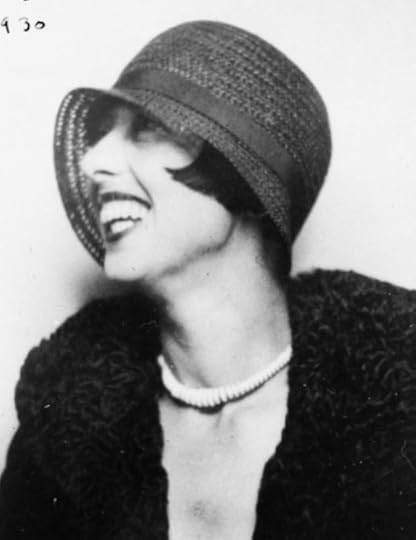
Solita Solano in 1930
. . . . . . . . . .
Although she loved to talk about literature, Janet didn’t very often admit that she was writing herself. Instead, she declared that she would be perfectly happy to spend her life at the Deux Magots cafe, only writing a novel “if the spirit moved” her.
But she was in fact dedicating quite a bit of time to writing: there were poems and some journalistic articles that she dismissed as hack pieces, and she was also working on her novel, The Cubical City. The novel was taken by George Putnam in late 1924 and eventually published in 1926, but by that time Janet was well and truly immersed in a proposal which had come her way the previous year, from her friend Jane Grant in New York. It was this which would set the course of the rest of Janet’s life.
Jane was a journalist for the New York Times; her husband Harold Ross had just founded The New Yorker. The first issue had been published on February 21, 1925. With its stated aims to “reflect the metropolitan life, to keep up with events and affairs of the day, to be gay, humorous, satirical, but to be more than just a jester,” the magazine had high ideals but not much solid backing.
For the next few months, Jane and Harold were ruthless in hiring and firing employees, all the while scouring the published press for any writers whose style might suit. Belatedly, Jane remembered Janet’s comment about spending the rest of her life in the Deux Magots. She and Ross decided to put Janet’s commitment to the test by asking her to become the magazine’s Paris correspondent, offering thirty-five dollars per submission for a fortnightly letter of about a thousand words:
“He [Ross] wants anecdotal and incidental stuff on places familiar to Americans and on people of note whether they are Americans or internationally prominent – dope on fields of the arts and a little on fashions…there should be lots of chat about people…and in it all he wants a definite personality injected. In fact, any one of your letters would be just the thing.”
These pieces were to appear anonymously, a policy that Ross adopted with all of the magazine’s writers. He did not, he said, want to advertise the magazine’s content or its writers, leaving the name of the magazine to speak for itself, and only the editors were ever attributed by real names.
For Janet, he came up with what appeared to be a Gallicized version of Janet — Genêt — although perhaps he was also thinking of Edmond-Charles-Édouard Genêt, the first French Ambassador of the French Republic to the United States, and a prolific letter writer himself. Either way, Janet was flattered and sent her first submission on September 13, 1925.
. . . . . . . . . .
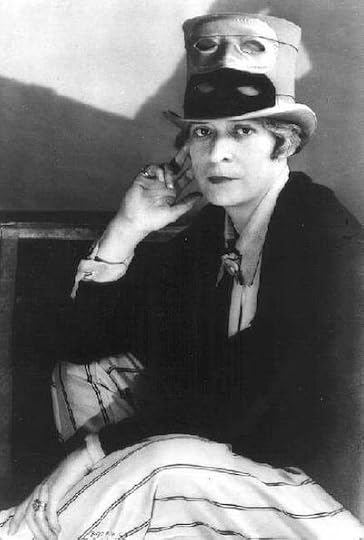
. . . . . . . . . .
The formation of a styleJanet’s early Paris letters, in keeping with the magazine’s satirical bent and Ross’s stated wishes, were a sparkling mixture of anecdotes, social observations, and wry commentary on Paris life. Full of doubt about her ability to sustain fiction, she felt as if she had found her niche, a way of writing the world around her without the vagaries and complexities of too much emotion or plot.
As Genêt she reported on literature, art, fashion, publishing, and the streets of Paris. She wrote on gallery openings and the latest movies, on the races at Longchamps and Colette’s favorite restaurant, on Mozart’s letters to his wife and Pierre de Lanux’s collection of lead soldiers.
She described to her readers the glittering nights spent at cabarets on “the hill” (Montmartre), and how dawn broke over the markets at Les Halles with their heady scents of flowers, vegetables, and coffee. In essence, she brought her readers to her Paris, and expected them to fit right in.
But Genêt was also witty and uninvolved: she was apart from almost everything she wrote, a sharp observer ever ready to dissect an experience with her tongue and her pen. Janet believed that Ross wanted her to write about what the French thought, not about what she thought, and so felt that her pieces should exclude the personal as much as possible.
She made no attempt at long-winded explanations or background information, and any opinions of her own were ambiguous. One of the few times she made her feelings known was in her description of George Antheil’s “Ballet mécanique” as wonderful, but composed entirely of sounds made by three people, “one pounding an old boiler, one grinding a model 1890 coffee grinder, and one blowing the usual 7 o’clock factory whistle and ringing the bell that starts the New York fire department going in the morning.”
She rarely analyzed, but tried to portray experiences in the wittiest way possible: of the 1925 Autumn Salon, she wrote: “After looking at the 3,000-odd canvases, you go out with a feeling that one of your eyes may be orange and the other pink and that one of your shoulders is certainly six inches higher than the other.”
For research, as well as her own experiences and contacts, she read an average of ten French newspapers a day, and she would later credit this regime, along with Ross’s editorship, with teaching her how to write. From the French journalistic style, and Ross’s passion for grammar and clarity, she learned to trim excess, balance sentences, and make her descriptions as clear as possible.
For the first time, she had deadlines and a purpose, and this gave her discipline to write whereas before she had struggled. Ross demanded a high standard and Janet strove to deliver — she often said that she wrote to please him.
The logistics of a fortnightly letter
During these months she established the routine that she would more or less follow for the next fifty years. Having decided on her topic or topics for that fortnight’s letter and gathered her material, she would then shut herself in her hotel room, sometimes for as long as forty-eight hours.
Solita would often type and edit for her, and, as time went on, other friends would attend events on her behalf, suggest people and places to write about, and help to gather material. When the letter was finished, Janet would take her copy to the Gare Saint-Lazare, where she could post it on the boat train that, on certain days, connected with a fast New York-bound ship. Once it arrived in New York, Janet very often heard nothing until it was published.
. . . . . . . . .
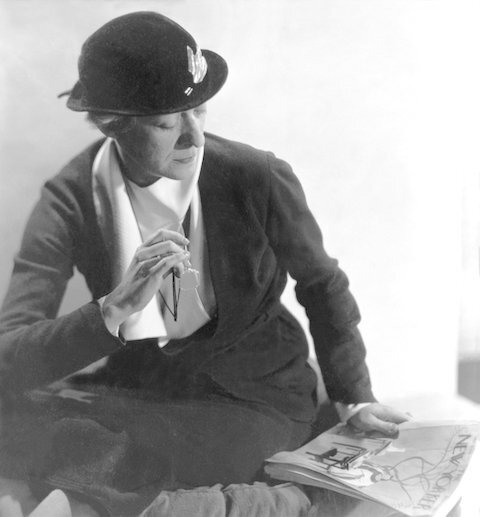
. . . . . . . . .
The challenge of ‘Profiles’Encouraged by the prospect of more money and by Ross’s determination that she should extend her writing, Janet soon decided to try writing a “Profile” — an almost four thousand-word sketch of a living person that was one of the magazine’s longest-standing features.
A list of eligible Profile names was kept in New York, and editors often assigned them to writers with some original knowledge of or contact with the subject. For Janet, a Profile was a challenge: the style was expected to be serious and in-depth, and the writer was expected to express more of an opinion beyond witty vignettes. In addition, Profiles were to be signed with the writer’s real name, or a different pseudonym of their choosing.
Her first, on the dancer Isadora Duncan, appeared in January 1927. Janet herself was pleased with the piece, especially considering that she was unused to the longer format. Profiles on novelist Edith Wharton and fashion designer Paul Poiret soon followed.
Duncan and Poiret were attributed to “Hippolyta,” but Janet signed the Wharton profile with her own name. It was the one she was most proud of and was also the one to convince her to finally give up on the idea of a second novel. If she had started competing with Wharton earlier, she said, she might have achieved something, but she had set her sights too high. Journalism — particularly this form of amusing, sardonic, people-focused journalism — was where her writing talents lay.
Economics and politics
Initially, Janet wasn’t particularly affected by the 1929 Wall Street crash, and her December 4th letter referred to it only as the “recent unpleasantness on Wall Street.” She was also fairly ignorant of politics in general and relied on friends to explain to her about the French party system.
Even when she had come to a basic understanding, she never felt confident in expressing her own opinions and preferred to avoid the topic altogether. In 1930s Europe, however, this was increasingly hard to do. By 1932, French industrial production had fallen, and unemployment had risen to the point where even Genêt had to acknowledge that, while Paris was “mostly still gay”, there was increasing unrest. One letter from this time was entitled “Political Addenda, Mostly Not Funny.”
In February 1934, there was rioting on the streets of Paris, worse than any that had been seen since the bloody Commune of 1871. Janet avoided the actual riots but did go to the Place de la Concorde the following day to be confronted with the fallout: bullet-marked stone, the smoking embers of two burned-out buses, and blood streaked across the pavements where the injured had been dragged away.
This marked a turning point in her views on the tone Genêt, and the Paris Letters, should take, and little by little she began to include more political commentary in her letters. She still felt out of her depth, and more often than not relied on others to provide the political knowledge and opinions that she felt she should have herself.
But she also began to enjoy her journalism in a different way. She became proud of the new Genêt, who she felt had a definite role to play in documenting history, doing so in some style and in a way far removed from traditional reportage.
In her journal over the next fifteen years, she would often succumb to further self-doubt, questioning the niche she had created for herself and wondering if her writing was too shallow (“surely the mechanical gimmick for an unfertile mind”), but during the early 1930s, she was riding high, high enough to propose to Ross that she try her hand at a London Letter as well as her regular Paris one. For the next several months, she would travel regularly across the Channel, gathering material for several letters as well as a Profile of Queen Mary.
The path to war
Janet had always resisted returning to America, even as war appeared to be inevitable. She staunchly claimed that she would only leave when forced and that she would be “the last Middle Westerner on this peninsula of Europe.” But by September 1939 she felt her situation was untenable.
Although The New Yorker asked her to stay, she refused: almost all of her American friends had left, and the streets of Paris were emptying. Janet had tentatively planned to leave in October for three months anyway, as her mother was not well, and she felt too guilty at leaving her sister Hildegarde with the burden of care. On October 5th, having left Paris three weeks earlier, she and Solita sailed for New York.
Letter from Paris in New York
Janet spent much of the war in America, helping to take care of her mother and continuing to write various pieces for The New Yorker. Her first, a story about the French under occupation that she researched with help from friends still in Europe, was understated, and conspicuously lacking in Genêt’s usual sarcasm and detachment. Janet’s only nod to her previous style was to mention what was still being served at The Ritz. Her next piece, on the French Resistance, was signed with her own name, and Genêt disappeared for the next four years.
From the end of 1942 through to the beginning of 1944, Janet worked almost consistently on an extended four-part Profile of Marshal Pétain, the head of Vichy France. It was a big success — Simon & Schuster brought all four parts of the article together in book form which was published in July 1944 — and Janet herself felt that it was the best work of her career.
A tumultuous personal life
Janet’s personal life was never settled, despite the length of time she had spent with Solita and despite their devotion to each other. Both women took other partners, and in 1932 Janet had met and fallen in love with Noel Haskins Murphy, a widow who lived just outside Paris in the village of Orgeval. It was one of her most serious affairs, and Noel would remain a lover and companion of Janet’s until the end of her life.
In New York, it happened all over again. She and Solita had set up home together just as they had done in Paris, but it wasn’t long until Janet met Natalia Danesi Murray, an Italian working at the National Broadcasting Company. After a weekend party on Fire Island, Janet was smitten, and by 1942 she had left the apartment she shared with Solita in order to sublet part of Natalia’s apartment.
Solita, however, continued to be a large part of Janet’s life (a sore point of contention between Natalia and Janet), and Janet continued to rely on her as an editor, critic, friend, and honorary member of her family. Neither did she tell Noel, now interned in a camp in the spa town of Vittel along with other American nationals, about Natalia.
Although Natalia and Noel would eventually be aware of each other, Janet consistently found herself unable to break with any of her lovers; she would often berate herself for her inability to commit fully to anything or anyone other than The New Yorker, with which all three women would have to share her.
Return to Europe
By October 1944, Janet had decided to get to France no matter what, and Jane Grant managed to get her a seat on a London-bound plane as an official army war correspondent for The New Yorker. After a terrifying flight (Janet would always hate planes) and several weeks in London, she arrived in France during the last week of November.
She was horrified at what she found. “Europe,” she wrote, “is a charnel house, filled with death, destruction, rot …” Her first letter from Paris in four years moved Ross enough that he revived the Genêt signature. In Paris, she stayed at the Hôtel Scribe, along with other foreign journalists including Hemingway.
Although she was popular and her opinions in demand, Janet was irritable and prone to outbursts. The pain she could see all around her, the waste, and the depressing atmosphere made her own loneliness and guilt worse, and she felt adrift.
Her mood was further depressed when she covered the Nuremberg Trials. She traveled throughout war-torn Eastern Europe to write letters from Warsaw, Czechoslovakia, and Austria. She was, she said, finding it harder and harder to believe in “governments, politics, religion, God, and even man himself.”
Honors and doubts
In the spring of 1948, Janet was invited to what she assumed was a social reception. She turned the invitation down, only to find out later that it had been a presentation ceremony for one of France’s highest honors, the Légion d’Honneur. For the rest of her life, she would wear the ribbon on her lapel, an acknowledgment of Genêt’s years of passionate writing.
Despite this recognition, Janet found herself reflecting — often harshly — on her writing and her life, reflections that were possibly precipitated by her mother’s death at the end of 1947. She was frustrated at becoming what she saw as a stereotypical woman: easily distracted, undisciplined once more, and passive in her work and her relationships.
While the front of Genêt was useful in that it allowed her, to some extent, to create a kind of “third sex;” Genêt was anonymous, neither male nor female, and distanced from any kind of sexual stereotype.
Janet also began to worry that Genêt also kept her removed from her own emotions and opinions, which she felt she needed to give her writing weight. It gave her a secure identity but took away her own.
At the same time, she feared striking out on her own without The New Yorker, and this seemed to paralyze her. In January 1949, she wrote in her journal: “I have manufactured journalism for nearly a quarter of this century. Nowadays everyone manufactures. Few create. If an individual knows the difference and I do, the failure to create leaves only one conclusion: one has manufactured.” But by then, she wrote, she believed she was too old to change.
Trouble at The New Yorker
The New Yorker saw the end of an era when Harold Ross died in December 1951, after undergoing surgery, and William Shawn took over as editor.
Janet, shocked by Ross’s death, wrote that: “I am so drowned, so hit by Ross’s death that I reach unsteadily, stiffly for words, like logs…& trying to save myself which is what all of us on the magazine feel…” Ross, for Janet personally, had changed everything by inventing someone for her to be. “The loss of my inventor,” she said, “is more personal than the loss of my procreator, by far.”
After this upheaval, a break with the magazine nearly came in 1952 when Kay Boyle and her husband Joseph faced court as part of the McCarthy trials. Janet offered to testify at Kay’s trial and did so wholeheartedly: she felt angry, upset, and betrayed when she discovered that, despite Kay having written for the magazine for several years, The New Yorker was lukewarm in their support. The case against both Joseph and Kay was ultimately settled in their favor, but the experience left Janet furious.
Gathering the material
During the 1950s and 1960s, Janet traveled between New York and Paris almost every other month, staying with Natalia in New York and continuing to write letters and Profiles for The New Yorker. Four of her Profiles — on Picasso, Braque, Malraux, and Matisse — were brought together in a book called Monuments and Men, published by Harper and Row in 1956.
Janet, still doubting the validity and worth of her work, was pleasantly surprised when the reviews were almost uniformly favorable. She had a further boost when, in 1958, she was given an honorary degree from Smith College.
A further collection of her work followed in 1963, when Michael Bessie (co-founder of the publishing house Atheneum) approached Janet with the idea of collecting her Paris letters into book form, to be edited and prefaced by William Shawn.
Paris Journal was published in the autumn of 1965 and reviews were generally excellent: Alan Pryce-Jones, in the New York Herald Tribune, wrote that “like a conjurer, she pulls out of her hat whatever is going to divert her audience; but, unlike the conjurer’s, her rabbits are still alive after twenty years,” while the Washington Post hailed her as a “paragon of foreign correspondents — the one with a first-class brain, plus the best senses in the business.” The book won a National Book Award in 1966, and a second volume soon followed.
Janet was less enthusiastic about a collection of her early writing: those letters from the 1920s and 1930s that she and Shawn had originally not included in Paris Journal. But she finally acquiesced under the enthusiasm of Irving Drutman at Viking.
This early work would be collected under the title Paris Was Yesterday, and to Janet’s surprise it was a critical hit: Anatole Broyard at the New York Times called it a “bouquet of epiphanies,” while George Wickes, writing in the New Republic, said it was “the work of a biographer with a touch of gallows humor and an unfailing curiosity.”
“Dying or going crazy”
By this time Janet was exhausted, both professionally and personally. Now into her seventies, the constant demands of her Paris letters and the traveling between continents were beginning to take their toll.
All of her friends were “dying or going crazy or having terrible operations,” and she feared the same for herself: her memory was failing, she suffered from kidney stones, and what had started as an irritating pain in her hand had grown so bad that she could no longer physically write.
Her memory lapses, in particular, made writing her Paris letters difficult, and friends started to wonder privately whether she wasn’t too out of touch. Increasingly she relied on others to tell her what was going on, what events were happening, and what she should focus on.
She became ill with sciatica, which made her irritable and finished off the decade with two cracked ribs and a nasty bout of food poisoning. She did, however, retain her sense of humor and her mischievous side, enjoying shocking those who thought that she would be more sedate.
. . . . . . . . . .
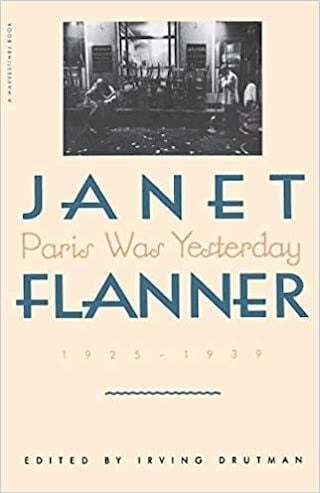
Janet Flanner page on Amazon*
. . . . . . . . . .
Janet’s frailty shook her confidence. Cared for by Natalia in New York, and by Noel, Solita, and Solita’s partner Lib Clark in Paris, it soon became clear that finally, at the age of eighty-three, her traveling days were over. When she left Orgeval in October 1975 it was for the last time. Solita, aged 87, died one month later.
In New York, Janet’s memory continued to worsen. She visited The New Yorker offices when she could, but she was often irritable and confused. At a 1978 Rutgers University conference on women, the arts, and the 1920s, she appeared on a panel with several of her old friends but did not speak; it was clear that, although she was enjoying herself, she had no idea where she was. She died not long afterward, on November 7, 1978, of undetermined causes.
Legacy
Janet Flanner was an intrinsic part of the history of The New Yorker, defining a style and a generation through her Paris letters. Many of her contributions can still be read on the magazine’s website, and Paris Was Yesterday is still popular, having been reissued by Virago Modern Classics.
She is also credited as being one of the inspirations behind the 2021 film The French Dispatch. But she herself did not want to be known only as a journalist. She was a woman who cared deeply for those around her and for her friends. After her death, Kay Boyle recalled Janet’s own words: “When I die, let it not be said that I wrote for The New Yorker for fifty years. Let it be said that once I stood by a friend.”
Further reading
Janet Flanner on The New Yorker website Paris Was Yesterday, 1925-1939 by Janet Flanner (Virago Modern Classics, 2003)Genêt: A Biography of Janet Flanner by Brenda Wineapple (Harper Collins, 1989)Darlinghissima: Letters to a Friend by Janet Flanner, edited and introduced by Natalia Danesi Murray (Harvest / HBJ, 1986)Janet, My Mother and Me by William Murray (Simon & Schuster, 2000)Contributed by Elodie Barnes. Elodie is an author, poet, and artist with a serious case of wanderlust. She is originally from the UK, but has spent time abroad in Europe, the United States, and the Bahamas.
When not traveling or working on her current projects — a chapbook of poetry, “The Cabinet of Lost Things,” and a novel based on the life of modernist writer and illustrator Djuna Barnes — she can be found with her nose in a book, daydreaming her way back to 1920s Paris. Visit her on the web at Elodie Rose Barnes.
. . . . . . . . .
*This is an Amazon Affiliate links. If a product is purchased by linking through, Literary Ladies Guide receives a modest commission, which helps maintain our site and helps it to continue growing!
The post Signed Genêt: Janet Flanner’s Letters from Paris appeared first on Literary Ladies Guide.



